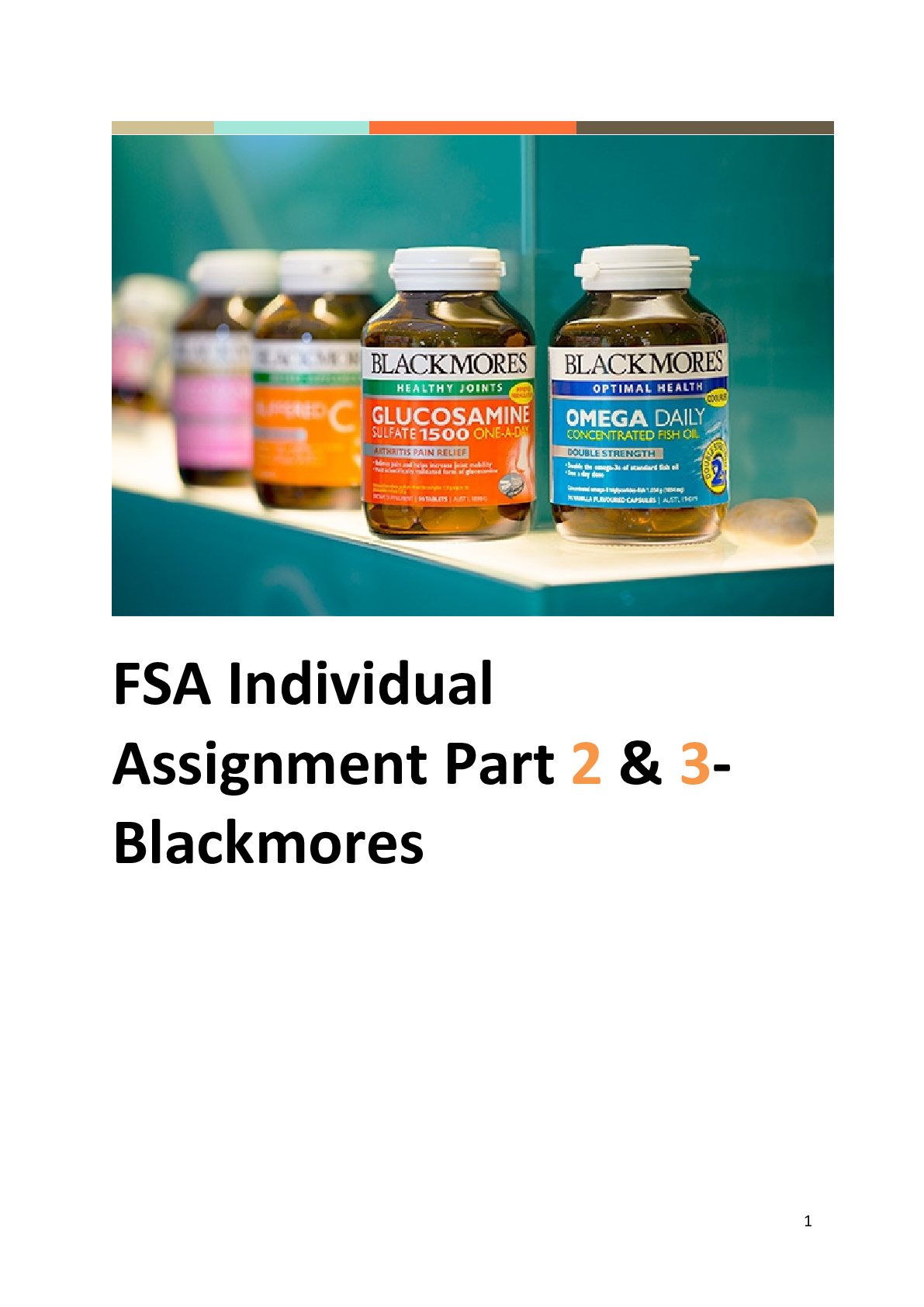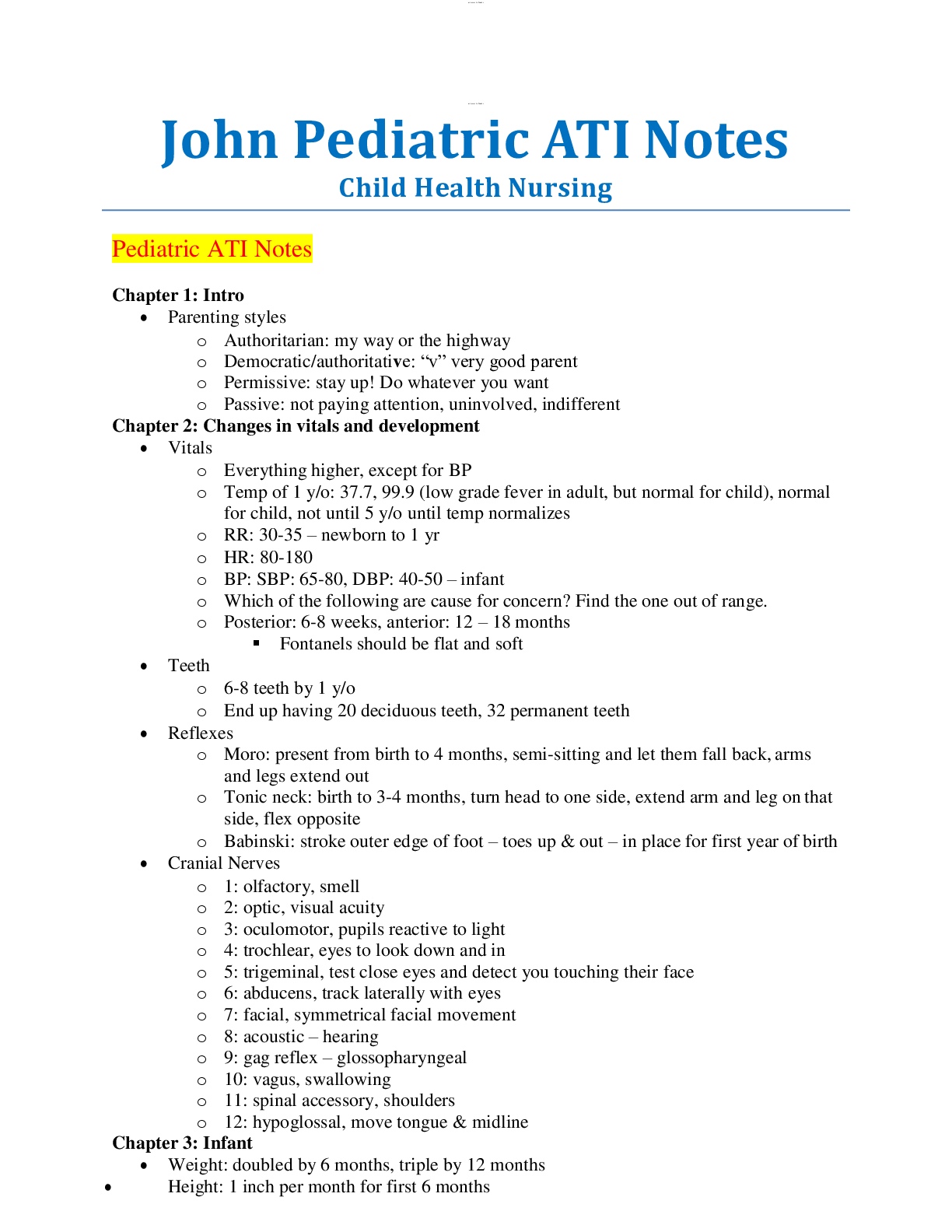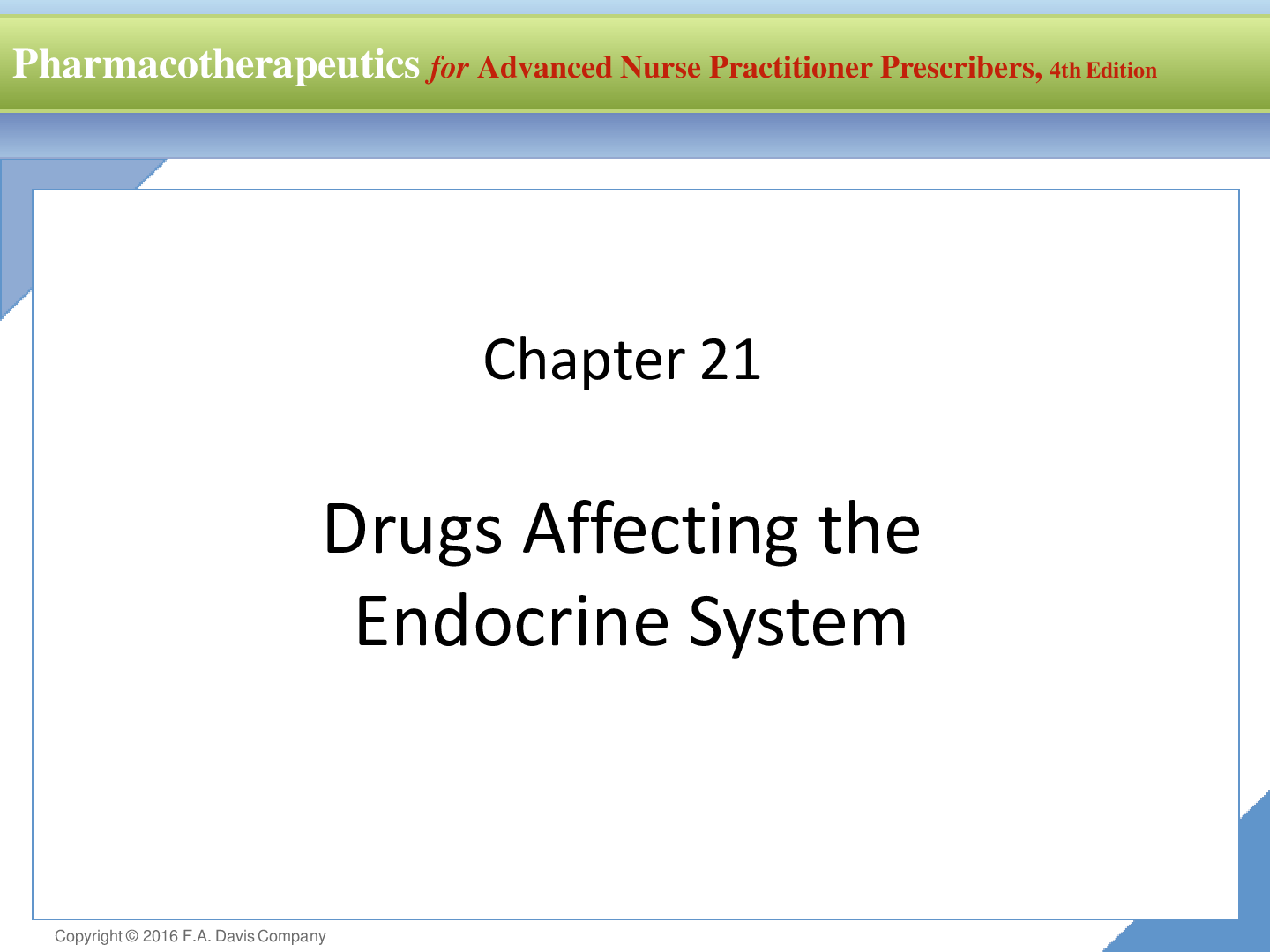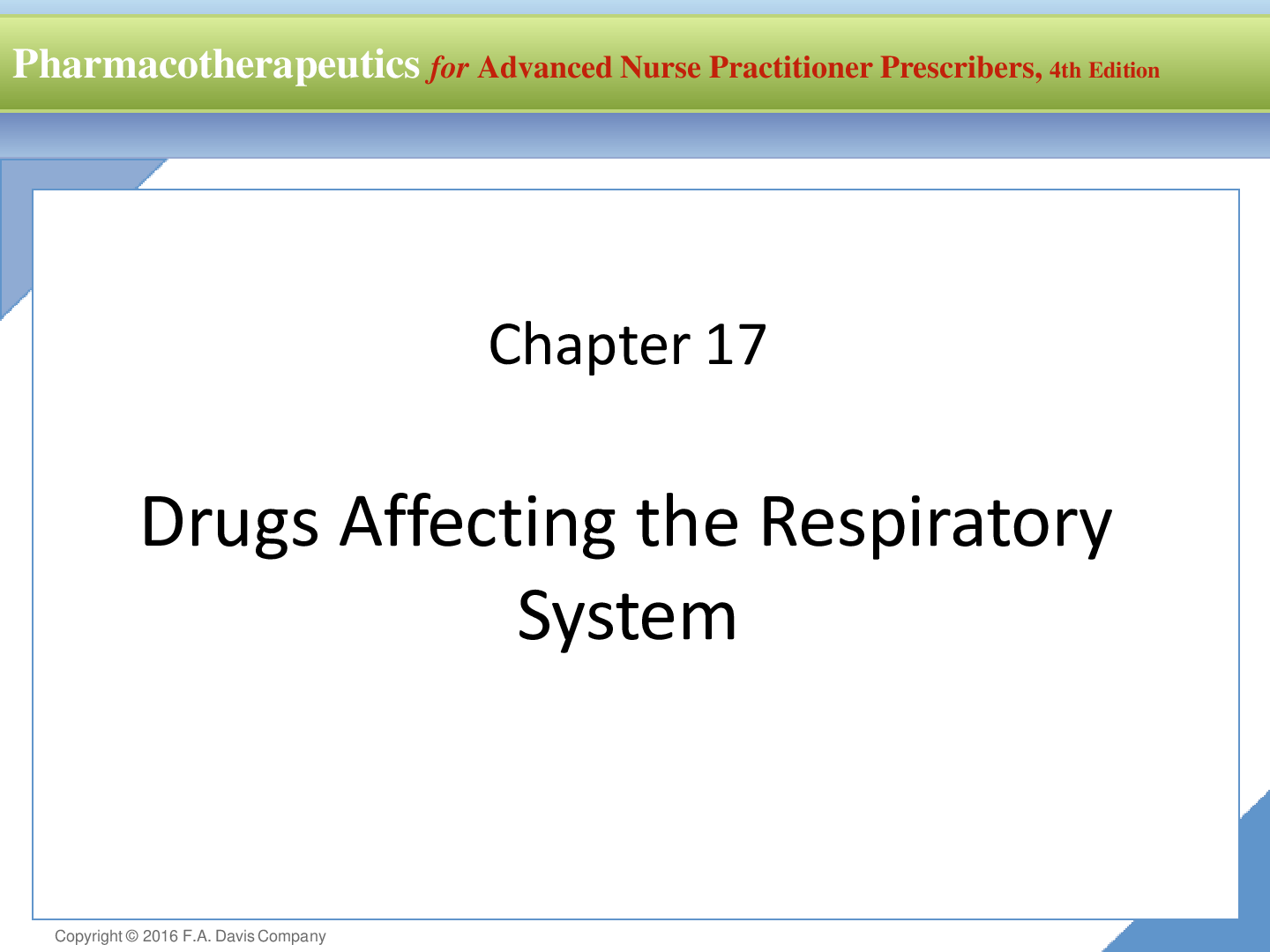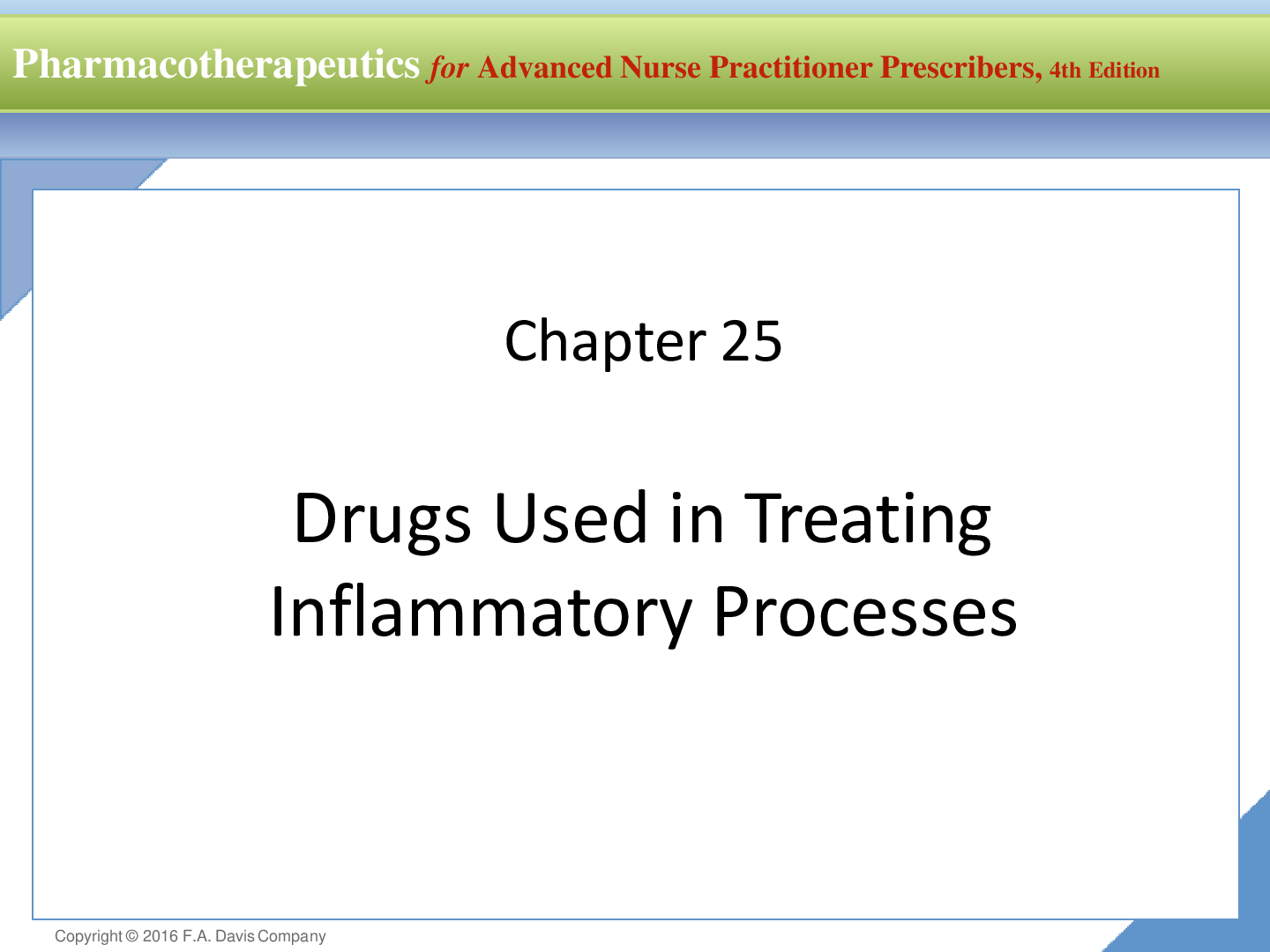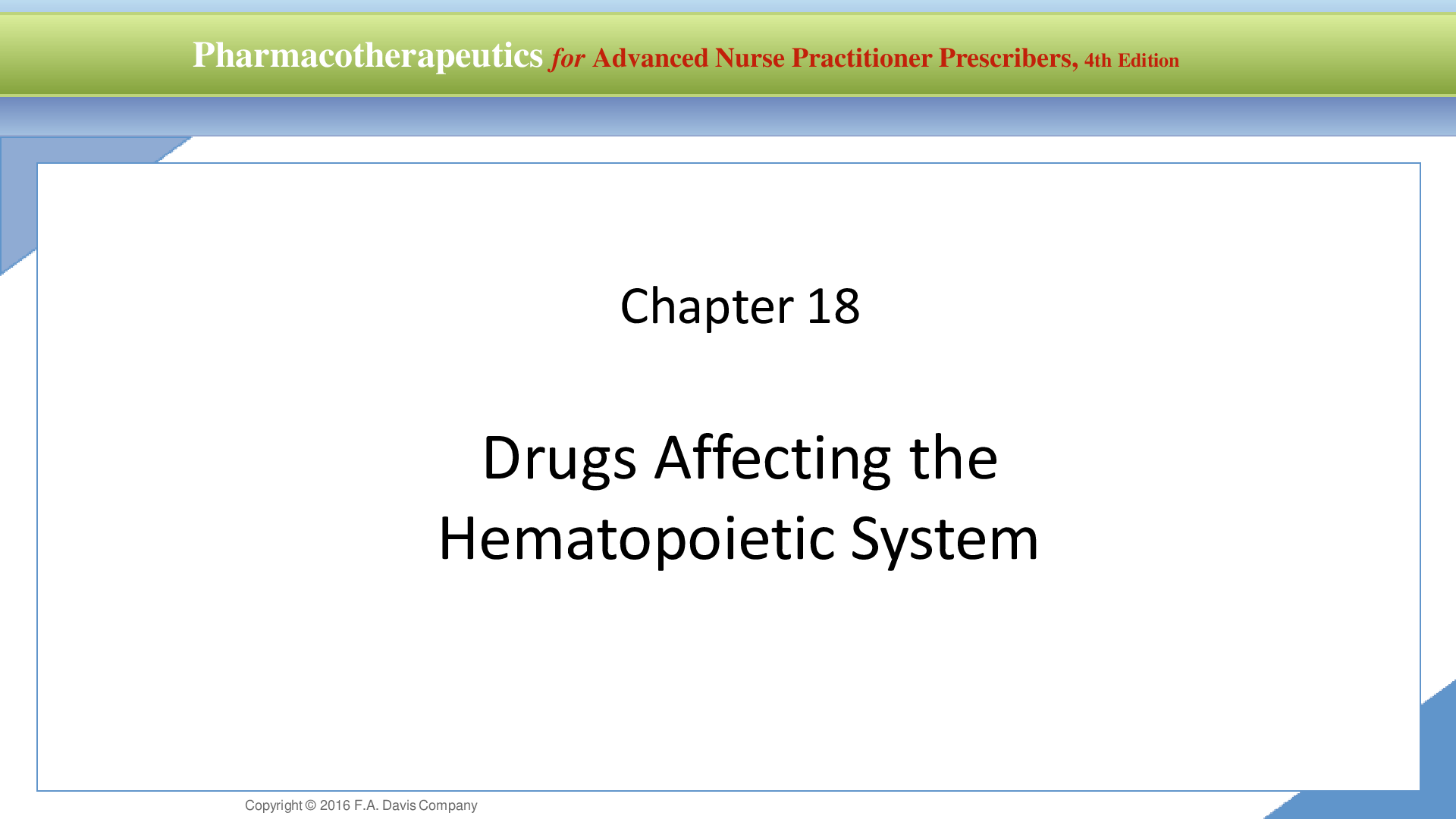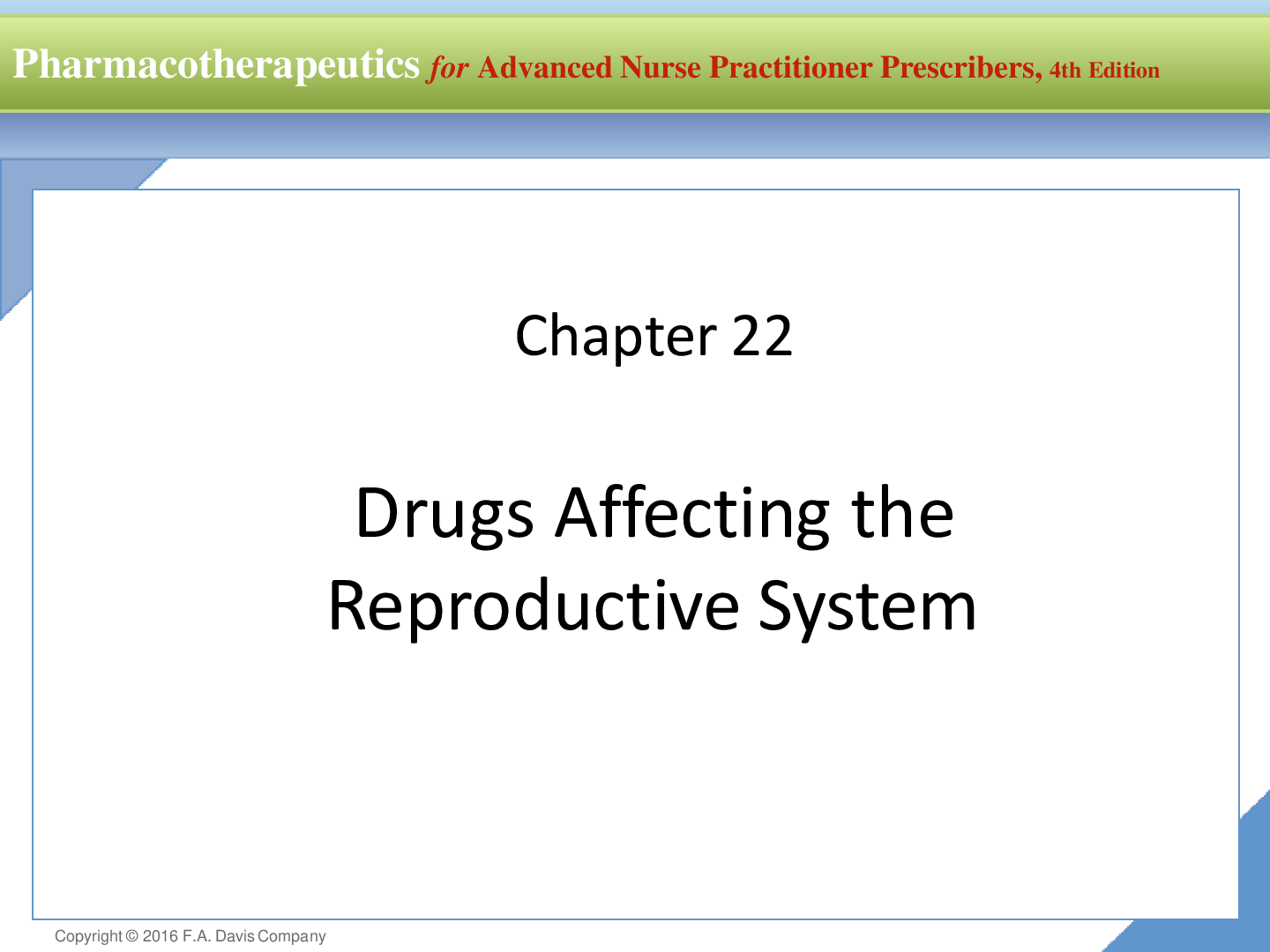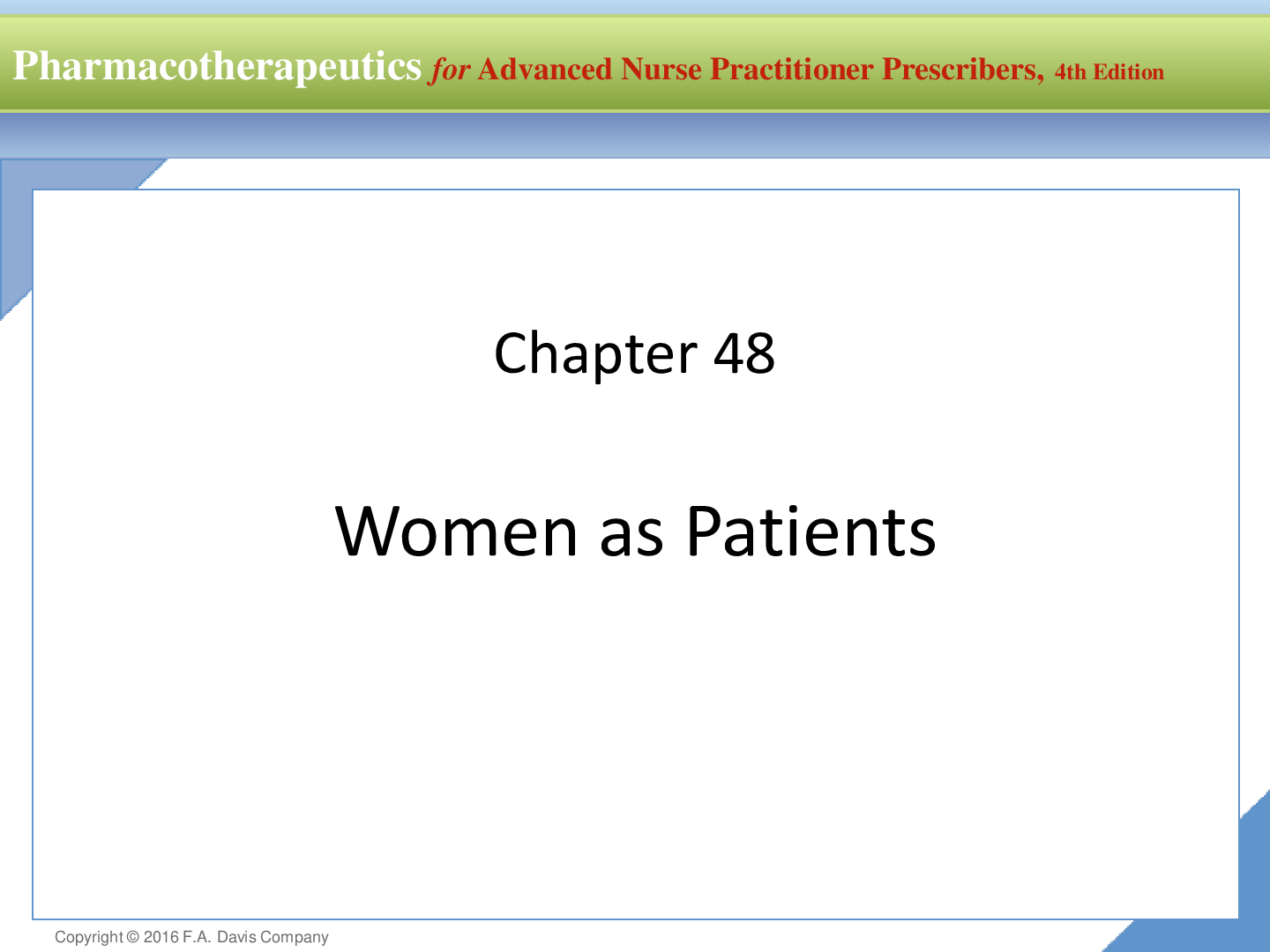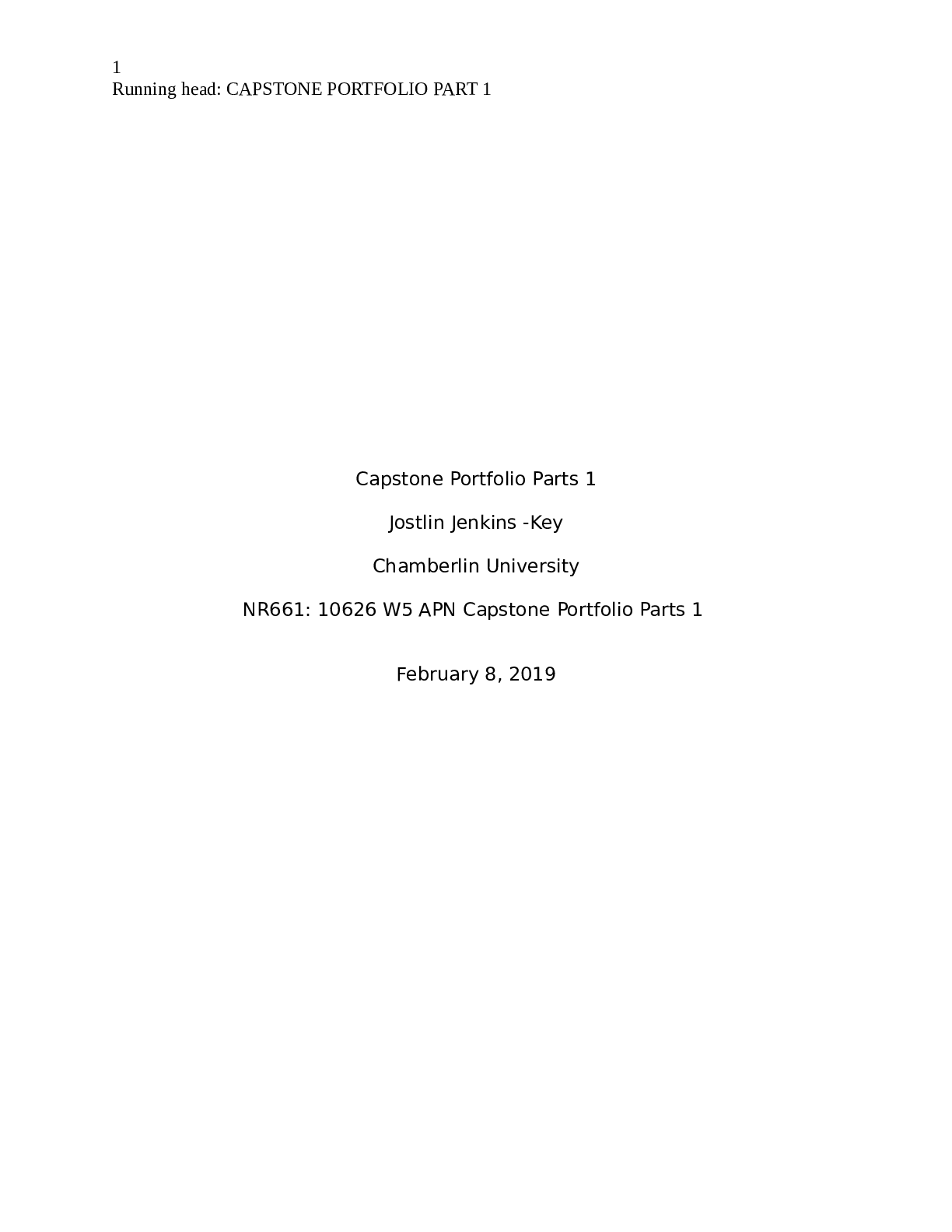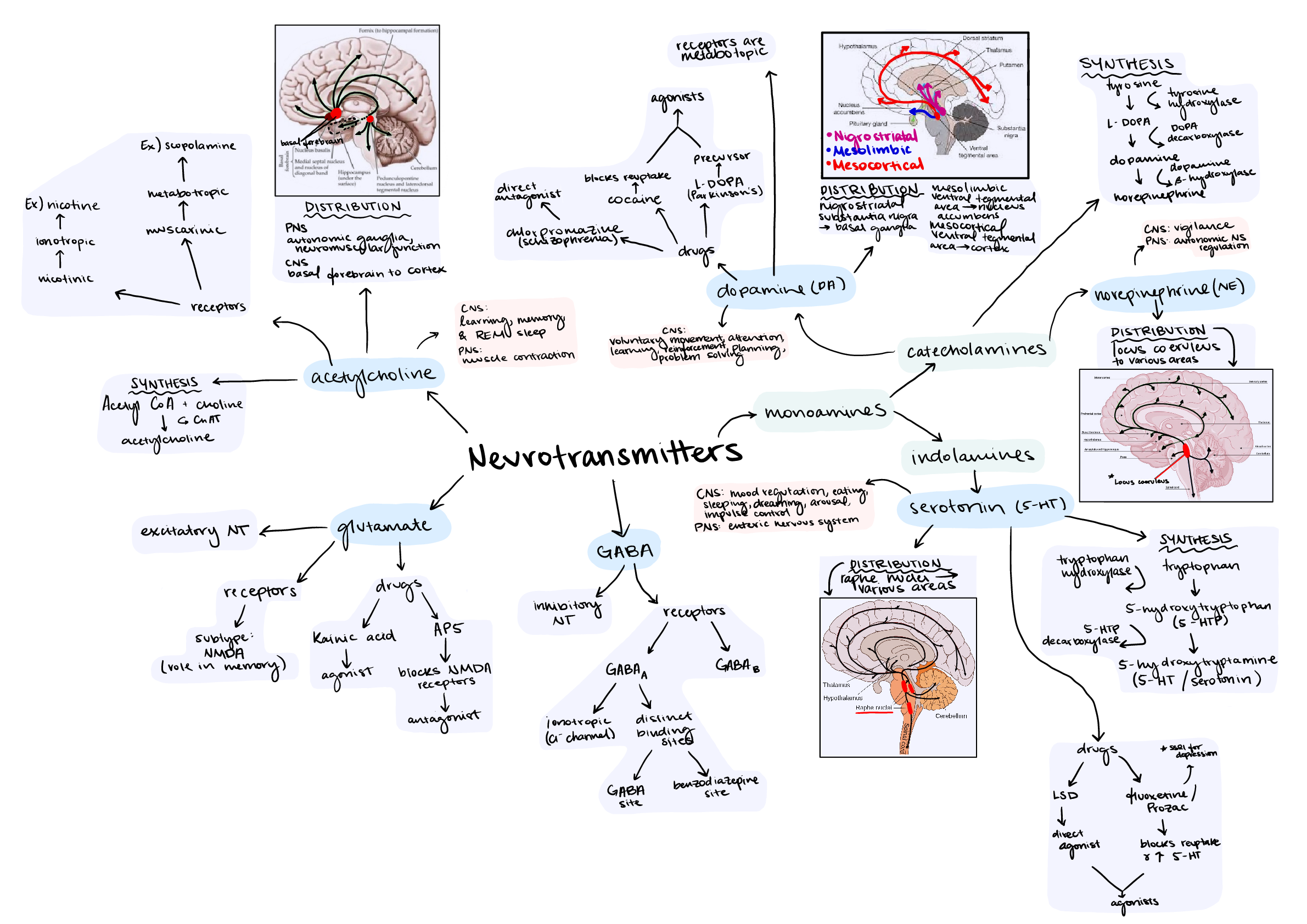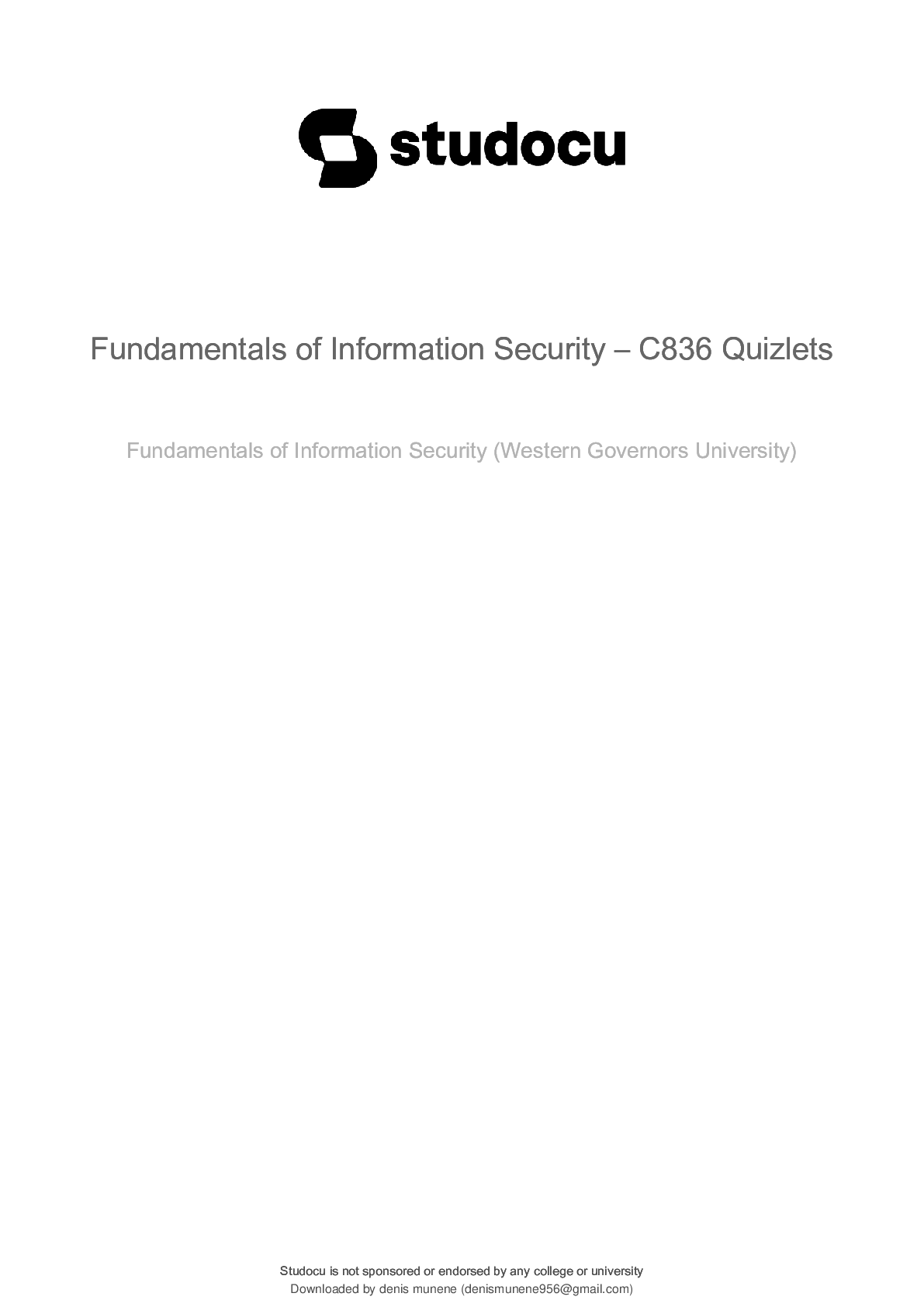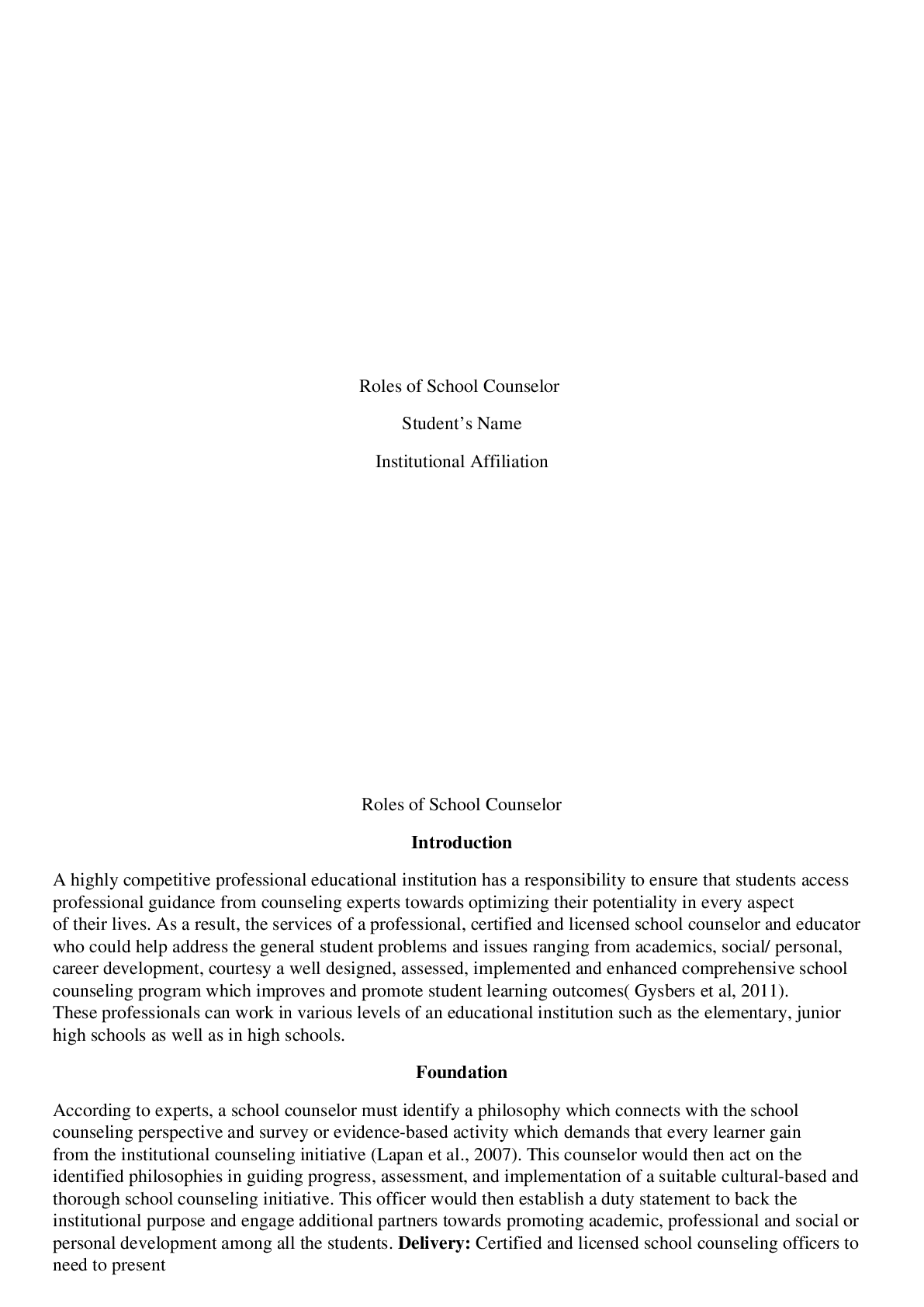*NURSING > Class Notes > NURSING 330 PEDS ATI PROCTORED STUDY NOTES (All)
NURSING 330 PEDS ATI PROCTORED STUDY NOTES
Document Content and Description Below
Questions from test: KNOW LAB VALUES: BUN, creatine, respiratory rates, HR, serum glucose, phenaline, phenylketone 2 year old develpment, what woud you report to the provider? 30 words? -celiac dis... ease menu, oj and eggs? or meats? Gramham crackers and peanut butter? -patient has 10% burn on body, finding report to provider. Urine output 35ml/hr Cycstic fibrousis, creatine or BUN monitor? Increase or decrease. Bun 6. BUN 12. Creatine 1.4. creatine 0.3. (note:creatine and bun determine kidney function) a nurse is caring for a child who is in the ER after ingesting a bottle of acetaminophen which of the following meds should the nurse plan to give acetylcysteine -antedote for acetaminophen overdose or poisoning a nurse is teaching the parents of a child who has rheumatic fever. which of the following statements by a parent indicates an understanding of the teaching my child may take aspirin for his joint pain -post cardiac cath, report to provider. Cool extermites below cath site. A: Weakend pedal pulses bilat. Findings in celiac - stetorhea -therapuetic effect for opiod pain? titrate till sedation (wrong)?After admin IV gentamacin for menningtits, following actions. Is and O's? Expected findings of appendicitis - The most common symptom of appendicitis is abdominal pain. Typically, symptoms begin as periumbilical or epigastric pain migrating to the right lower quadrant (RLQ) of the abdomen. Pt comes in with submersion injury, priority action. intubation? Iv? Priority Action for Submersion Injury - Signs and symptoms of near drowning include respiratory distress, tachypnea, rales, wheezing and possible hypothermia. Obviously, initial management includes the ABCs — Airway, Breathing and Circulation. Dornase alfa (pulmozyme) decreases viscosity of mucus and improves lung function. improvement monitored by pfts. use once daily. cycstic fib expected findings? absence of pancreatic enzymes, positive sputum culture, thick yellow-grey mucous, meconium ileus at birth, large loose fatty sticky foul smelling stools, distended abdomen, thin arm & legs, sweat tears saliva abnormally salty, viscous cervical mucous, absent/ decreased sperm. lab-sweat chloride test, normal <40 meq/l. stool analysis for azotorrhera (stinky from protein) and statorrhea (undigested fat). blood glucose. xray. -post tonsillectomy actions. straw? side lying? A: Comfort- ice collar/ keep throat moist/ pain meds. tonsil nursing actions: elevate head, asses for bleeding (clearing the throat, restlessness, bright red emesis, tachycardia/ pallor, frqt swallowing). Vitals/airways/ difficulty breathing. Comfort- ice collar/ keep throat moist/ pain meds. Diet- clear liquids/fluids after gag reflex returns. soft bland foods. No coughing/ throat clearing/ nose blowing/ no pointed object. Maybe blood tinged mucous or clots in vomit.-MMR at what age first. Answer: 12 months -manifest Otis medias A: tonislitits -management sleep terrors. Don’t wake patient? -Keep consistent bedtime routine -Use night-light in the room -Provide child with favorite toy -Leave drink of water by bed -Reassure preschoolers who are frightened, but avoid allowing them to sleep in parent's bed -diaper rash treatment. Antibacterial soap with each diaper change? Powder twice a day? -enteral feedings, flush tube or check gastric residual -epiglottis, what to do first. Contact/droplet precautions? -indicate protein deficiency? Dry, thinning hair -5 year old up to date with current immunizations get what at 5. Answer: VARICELLA (CORRECT). Others: dtap. Mmr, ipv a nurse is teaching parents of a 10 year old child who has iron deficiency anemia. which of the following statements by a parent indicates an understanding of the teaching. Will give with antacid. Will give with milk when can child with varicella come off droplet precautions. After lesions have scabbed. 24 after antibiotics when can patient come off precautions for menninggits. 24 after antibiotics. Negative blood culture. a nurse is caring for an 8 year old who has sickle cell anemia. which of the following actions should the nurse take A: give the child flavored popsicles -to maintain hydration to avoid sickling a nurse is assessing the pain level of a 3 year old child who is postop following abdominal surgery. which of the following pain scales should the nurse use FACES a nurse is caring for a 2 day old infant who has myelomeningocele. which of the following actions should the nurse takemonitor the infant head circumference -increased risk for hydrocephalus a nurse is teaching the parents of a 4 month old infant who has gastroesophageal reflux which of the following statements by the parent indicates an understanding of the teachign i will add 1 tsp of rice cereal per oz to my babys formula -osteomyelitis intervention, diet?, physical activity? -sickle cell teaching parents, signs look for at home -atraumatic care IM injection? Pacifier with sucrose before injection or use 20 gauge -gas inhale, findings. Polyuria? -how to rehydrate patient vomiting for 3 days. Oral rehydration. Sodium 0.9 IV. -90/90 skeletal traction after scoliosis surgery. Use two people to turn patient? Air mattress? -question where one answer is facial twitching -pain scale for a 3 year old? Oucher? Visual pain scale? -acyt acid ingested, findings. -adloscent want to be screen for STI. Answer: have patient sign conscent form. Do not need parents conscent for STI’s -preschooler sibling dies. Curious what happens to the body after death A nurse is caring for a child who is postop following a tonsillectomy. which of the following findings is the nurses priority A: frequent swallowing a nurse is assessing a toddler who has measles (rubeola) which of the following findings should the nurse expect Koplik spots. Show on the diagram where kolpik spot found. A. Inside mouth a nurse is providing teaching to an adolescent who has scoliosis and a new prescription for a Boston brace. which of the following responses by the adolescent indicates an understanding of the teaching aA:i can take my brace off for about an hour daily to showera nurse is assessing pain in a 3 year old child following a tonsillectomy. which of the following rating scales should the nurse use to determine the childs pain level? FACES - Word graphic rating scale (4-17) a nurse is providing nutritional teaching to an adolescent client who has celiac disease. which of the following breakfast foods should the nurse recommend? scrambled eggs a nurse is assessing a 2 month old infant who has a ventricular septal defect. which of the following findings should the nurse report to the provider weight gain of 1.8kg (4lbs) -indicates increase fluid and worsening of the childs heart failure -care post tonsillectomy. A nurse is checking the vital signs of a 2-year-old child during a well-child visit. Which of the following findings should the nurse report to the provider? Sleeps 12 hrs a day, 30 word vocab??? A nurse is checking the vital signs of a 3-year-old child during a well-child visit. Which of the following findings should the nurse report to the provider? A. Temperature 37.2˚ C (99.0˚ F) B. Heart rate 106/min C. Respirations 30/min D. Blood pressure 88/54 mm Hg C. CORRECT: Respirations of 30/min is above the expected reference range for a 3-year-old child and should be reported to the provider. a nurse is providing dietary teaching to the parent of a child who has cystic fibrosis. which of the following dietary recommendations should the nurse makeincrease the childs protein intake a nurse is caring for an infant following surgical repair of a cleft lip and palate. which of the following actions should the nurse take? A: suction the infant gently with a bulb syringe PRN A nurse is preparing a toddler for an intravenous catheter insertion using atraumatic care. Which of the following actions should the nurse take? (Select all that apply.) A. Explain the procedure using the child's favorite toy. B. Ask the parents to leave during the procedure. C. Perform the procedure with the child in his bed. D. Allow the child to make one choice regarding the procedure. E. Apply lidocaine and prilocaine cream to three potential insertion sites. A. CORRECT: Explaining the procedure using the child's favorite toy can assist the child to manage fears and provides atraumatic care. D. CORRECT: Allowing the child to make choices offers a sense of control over the situation and should be used to provide atraumatic care. E. CORRECT: A topical analgesic, such as lidocaine and prilocaine cream, decreases pain and should be used to provide atraumatic care. a clinic nurse is providing teaching to the parent of a 1 month old infant who has gastroesophageal reflux. which of the following statements by the parent indicates an understanding of the teaching i will add rice cereal to my baby's feedings a nurse is planning care for an adolescnet who has sickle cell anemia and is experiencing a vaso-occlusive crisis. which of the following interventions should the nurse include in the plan maintain the child on bedrest a nurse is assessing a 6 month old infant following a cardiac cath. which of the following findings should the nurse report to the provider BP of 86/40 -indicative of hypotension and bleeding in a 6month olda nurse at a clinic is preparing to administer immunizations to a 5 yr old child. which of the following immunizations should the nurse plan to give DTaP between 4-6 years old a nurse is teaching parents of a 10 year old child who has iron deficiency anemia. which of the following statements by a parent indicates an understanding of the teaching i will administer the iron tablet with orange juice - increases the irons absorption A nurse is caring for a 10-year-old child who has acute glomerulonephritis. Which of the following findings should the nurse report to the provider? A. Serum BUN 8 mg/dL B. Serum creatinine 1.3 mg/dL C. Blood pressure 100/74 mm Hg D. Urine output 550 mL in 24 hr B. CORRECT: Serum creatinine 1.3 mg/dL is out of the expected reference range for a 10-year-old child, and should be reported to the provider. A nurse is caring for an infant who has a hydrocele. Which of the following actions should the nurse take? A. Prepare the child for surgery. B. Explain to the parents that the issue will self-resolve. C. Retract the foreskin and cleanse several times daily. D. Refer the family for genetic counseling. B. CORRECT: Hydrocele is fluid in the scrotum and resolves spontaneously in the majority of cases. Not here but related: a nurse is reviewing the lab results of a child who has experienced diarrhea for the past 24 hrs which of the following values for urine specific gravity should the nurse expect? 1.035a nurse is caring for a child who has suspected nephrotic syndrome. which of the following lab values should the nurse expect serum cholesterol 700 -is above the expected range because of increase in plasma lipids a nurse is caring for a child who has a possible intussusception. the parents of the child ask the nurse how the diagnosis is made. which of the following responses should the nurse make? an abdominal ultrasound will confirm the pocket in the intestine -confirmed by xray, ct or ultrasound a nurse is providing teaching to the parents of a school age child who has type 1 diabetes about management of hypoglycemia. which of the following responses by the parents indicates an understanding of the teaching i will make sure my child drinks 240mL of milk asap. -10-15 g of simple carbs will elevate the blood glucose level a home health nurse is developing a plan of care for the parents of a toddler who has hemophillia. which of the following instructions should the nurse include in the plan? inspect the toddlers toys for sharp edges a nurse is caring for a child who has cystic fibrosis and a pulmonary infection. which of the following findings is the nurses priority inability to clear secretions A nurse is planning care for a child following a surgical procedure. Which of the following interventions should the nurse include in the plan of care? A. Administer NSAIDs for pain greater than 7 on a scale of 0 to 10. B. Administer intranasal analgesics PRN. C. Administer IM analgesics for pain. D. Administer IV analgesics on a schedule. D. CORRECT: IV analgesics should be administered on a schedule to achieve optimal pain management. A nurse is caring for a 4-month-old infant who has meningitis. Which of the following findings is associated with this diagnosis? A. Depressed anterior fontanel B. Constipation C. Presence of the rooting reflex D. High-pitched cryD. CORRECT: The nurse should identify a high-pitched cry as a finding associated with meningitis between ages 3 months to 2 years. Tonsillitis - hx of otitis media, hearing difficulties, sore throat w/ swallowing. lab tests throat culture for group a strept. preop cbc to assess anemia/infections A HCP is caring for a pt who is about to receive gentamicin to treat a systemic infection. The healthcare professional should question the use of the drug for a pt who is also taking which of the following drugs? Furosemide (lasix) Diphenhydramine Acetaminphen Levothyroxine (synthroid) Furosemide (lasix) Gentamicin and furosemide are ototoxic drugs.PEDS ATI PROCTORED STUDE NOTES How to Prevent SIDS: Safety Tips Always put your baby to sleep on his back. (supine) Use a pacifier at sleep time. Ury swaddling your child. Have her sleep in a crib in your room. Make sure the crib mattress is firm and tight-fitting WBC 4-11 Serum creatine (kidneys) 0.6-1 Normal BUN 7-20, elevated BUN means dehydration Mg 1.5-2.5 Rbc 4-5 Cal 9-11 Hemoglobin 12-18Hemat 36-53 Bilrubin .2-1.2 Bilirubin in new born, below 5.2 BP 1-3 years : low 85/45 High 117/76 Says 3-5 words by 1 year Checkup 72 hours after discharge from birth -solids after 4-6 months -nocturnal sleep at 4 months -sleep 15 hrs day at 4 months Sleeps through night 1 year -rear facing car seat till 2 years 1-3 years: Chest and head circumferne equal by 2 years 3 years, gender identity 3 years: rides a tricycle, stands on one foot 4 years: jumpes rope, throws ball overhead 5 years: walks backward heel to toes, throws and catches easily Age Gross Motor Skills Fine Motor Skills 1 month Demonstrates head lag Has a strong grasp reflex 2 months Lifts head off mattress when prone Holds hands in open positionGrasp reflex fading 3 months Raises head & shoulders off mattress when prone Only slight head lag No longer has a grasp reflex Keeps hands loosely open 4 months Rolls from back to side Grasp objects with both hands 5 months Rolls from front to back Uses palmar grasp dominantly 6 months Rolls from back to front Holds bottle 7 months Bears full weight on feet. Sits, leaning forward on both hands Moves objects from hand to hand 8 months Sits unsupported Begins using pincer grasp 9 months Pulls to a standing position. Creeps on hands & knees instead of crawling Has a crude pincer grasp Dominant hand preference evident 10 months Stands holding furniture. Changes form a prone to sitting position Grasp rattle by its handle 11 months Stands. Cruises/walks while holding onto something. Walks with one hand held Places objects into a container Neat pincer grasp 12 months Walks assisted. Sits down form a standing position without assistance Tries to build a two-block tower without success Can turn pages in a book 15 months Walks without help Uses a cup well Builds a tower of two blocks 18 months Runs clumsily; falls often. Throws ball overhead, Jumps in place with both feet, Pulls & pushes toys Manages a spoon without rotation Turns pages in a book, two or three at a time Builds towers of three or four blocks 2 years Walks up and down stairs by placing both feet on each step Builds a tower of 6 or 7 blocks Turns pages of a book one at a time 2.5 years Jumps across the floor and off a chair or step with both feet Stands on one foot momentarily Takes a few steps on tiptoe Draws circles Has good hand-finger coordination 3 years Rides a tricycle Jumps off bottom step Stands on one foot for few seconds 4 years Skips and hops on one foot Throws ball overhead Catches ball reliably 5 years Jumps rope Walks backward with heel to toe Throws and catches a ball with ease INFANT ACTIVITIES & TOYS TODDLER ACTIVITIES & TOYS Rattles Soft stuffed toys Teething toys Nesting toys Playing pat-a-cake Playing with balls Reading books Mirrors Brightly colored toys Playing with blocks Filling & emptying containers Playing with blocks Looking at books Push-pull toys Tossing balls Finger paints Large-piece puzzles Thick crayons 4) When does the first teeth erupt? Between 6-10 months use pincer grasp – 9 months use pincer grasp – 9 months INFANT: Comprehends “no” by 10 months TODDLER: 300 words by age 2 1 year- using one-word sentences 2 years- using multiword sentences by combining two to three words 3 years- combining several words to create simple sentences using grammatical rules PRESCHOOL: KNOWS 2,100 words by age 5 3-4 years- speak in 3 to 4 word sentences 4-5 years- speak in 4 to 5 word sentencesWhile assessing an infant, the nurse will examine the baby’s back: what is the nurse looking for? Mongolian marks -How is a child’s respiratory system anatomically different from an adult’s? What discharge education would the nurse provide to the family about caring for their child who just had a tonsillectomy?1) No citrus juices, soda, milk, no using straws 2) Give ice chips Shorter and narrower airway 2. Higher trachea 3. Bronchial branching at different angles Symptoms of croup: 1) “barking cough” 2) Stridor 3) Hoarseness Epiglottitis croup: 1) MOST LIFE THREATENING – medical emergency 2) Rapid onset, hours, may progress to blocked airway 3) NO BARKING COUGH 4) CHILD PERFERS UPRIGHT POSITION 5) Ages 2-8 -resp infections can lead to ear infections -What is cystic fibrosis? How does a child get this disease? An inherited life-threatening disorder that damages the lungs and digestive system What treatment is done to close the ductus arteriosus? • Administer indomethacin or IV/oral ibuprofen if premature infants & no CHFWhat are the signs and symptoms of congestive heart failure in a child? • Tachycardia • Gallop rhythm (S3) • Diminished pulses Edema in hands, feet, • Crackles, rales or rhonchi • What are the most common causes for congestive heart failure in an older child/adolescent? • In older children/adolescents, caused by acquired heart disease such as: CREM 1) cardiomyopathy, 2) endocarditis, 3) myocarditis, 4) rheumatic fever OXYGEN TREATMENT IF NO CONGENITAL DEFECTS MONITOR HEIGHT AND WEIGHT, GROWTH DELAY INDICATES HEART DEFECT What is a ventricular septal defect? Ventricular – increased pulmonary • Abnormal connection between right & left VENTRICLES (Tet) spells—hypercyanotic, caused by crying, feeding, defecating What interventions would a nurse do if a child had a tet spell? • Place infant in knee-chest positionWhy does the nurse take blood pressures in the upper and lower extremities of a newborn or infant? • Noticeable difference in blood pressure between arms & legs (higher BP in arms, low BP in legs); Indicates: Coartation of the aorta Should right ventricular failure occur, what signs and symptoms would the nurse expect? Pale clammy skin Cyanosis Feeding problems What are the clinical manifestations of Kawasaki disease? • Red eyes w/out drainage • Bright red chapped lips • Strawberry tongue w/white coating or red bumps • What is rheumatic fever and what is the usual cause of this problem? •• autoimmune response from untreated or partially treated group A streptococcal What is digoxin given for? What should the heart rate be in order to administer it to an infant? Digoxin used to improve heart contractility Hold digoxin if HR: -Less than 90 in infant -Less than 70 in child Bronchitis – worse at night Influenza type B (HIB) vaccine – decreases epiglottis is children Preschool age 3-6: ag calorie intake 18001. What instructions should a nurse give to a parent to treat a child with an episode of epistaxis? a. Sit up with head tilted slightly forward b. Apply pressure to lower nose with thumb and forefinger for at least 10 minutes c. Have child breathe through mouth d. It bleeding continues i. Pack nose with tissue or cotton into nostril that’s bleeding if needed ii. Apply ice to bridge of nose iii. If it continues longer it’ll need to be packed or cauterized - ORS (oral rehydration salts)- 1st line mild- mod dehydration 2. - What is the treatment and nursing management for a child immediately postburn? a. Treatment i. Medications should be given IV because the fluid shift limits absorption from subcutaneous and intramuscular areas to prevent hypovolemic shock ii. - Hypokalemia 1. Causes low hydrogen ions (acid) which can lead to cardiac irritability iii. Cystic fibrousis 1. Replace fluids 2. Oxygen b/c they are not gas exchanging 3. Nebulizer 4. Chest physiotherapy iv. Loss of NG fluid 1. Replace fluids Weight Fluid Requirement 1-10 kg 100 ml/kg 10-20 kg 50ml/kg (next 10kg) Above 20kg 20 ml/kg (any amt. above 20 kg) b. Minimum urine output sheeti. Infants 2 mL/Kg/hr Children 1ml/kg/hr ii. Adolescent 0.5 mL/Kg/hr 1. What are the differences between a child and an adult’s renal system? a. Child’s renal i. Fluid more important in infant/small child because makes up larger portion of total body weight ii. Kidneys less efficient in regulation of electrolytes/acid-base balance 1st 2 years (prone to fluid volume & dehydration) iii. Smaller bladder capacity at birth (25-50mL) iv. Innervation of stretch receptors in bladder walls does not occur before age 2 (no sensation of full bladder) v. Urethra is shorter in children a. Methods to collect urine i. Infant 1. Clean Catch a. Urine collection bag (Need approximately 20 mL) 2. Straight cath ii. Child (School age) 1. Clean catch b. Methods for urinalysis and urine culture ati Page 151 fill in i. Sterile cath and suprapubic aspiration are the most accurate methods for obtaining urine for urinalysis and culture in children less than 2 years of age. - (want 4-8 wet diapers/day) c. Chordee i. Downward curvature of the penis and an incomplete foreskin.ii. iii. What is cryptorchidism: iv. One or both testes do not descend from inguinal canal into scrotum Often descend within 1st year e. Diet: glomerulonephritis limit i. sodium, ii. potassium iii. protein intake glomerulonephritis- hematuria, *hypertension -throat (primary site of infection)/ skin. b. nephrotic syndrome i. Edema ii. Massive proteinuria iii. Hyperlipidemia m. diagnosis for chronic renal failure ii. Excess Fluid Volume a. Child’s GI i. Newborn has smaller stomach capacity ii. Newborn has stronger peristalsis than older child iii. Increased emptying rate of stomach in newborn compared to older child iv. Metabolic rate is faster in infants v. Infant secretes more fluids & electrolytes into intestine Infant’s small intestine has a larger surface for absorption relative to body size vi. Infant has proportional shorter large intestine vii. Liver functions immature in infant/yg child viii. Infant deficient in several digestive enzymes b. Assessmenti. Weight, height, head circumference and abdominal girth ii. Bowel sounds a. GI alterations for failure to thrive i. Milk allergy, GERD, cleft lip/palate, hypertrophic pyloric stenosis, hirschsprungs(difficulty passing stool) iv. Gastroesophageal reflux - Most common esophageal problem in infants v. #1 reason for gastic sugery in infants(GERD a. Cleft lip i. —Incomplete fusion of oral cavity in utero ii. More common in boys b. Cleft palate i. Incomplete fusion of palates in utero ii. More common in girls. Palate=Pussy vi. s Hirschsprung’s disease - A condition of the large intestine (colon) that causes difficulty passing stool. Result is no peristalsis vii. No peristalsis=accumulation of intestinal contents & bowel distension c. S/S newborn: MEGACOLON i. Failure to pass meconium stools a. ] : diaphragmatic hernia i. Fetal u/s shows abdominal organs in chest 9. What are the signs and symptoms of biliary atresia?- bile ducts narrowed a. Healthy appearing w/jaundice occurring in 2 weeks-2 months b. Acholic stools: putty-like, clay-coloreda. appendicitis i. Abdominal pain worsening & localize in right lower quadrant at McBurney’s point ii. Rigid abdomen iii. Concern if pain stops iv. RUPTURE! v. celiac disease (fat in stool) - An immune reaction to eating gluten, a protein found in wheat, barley, and rye. S/s: vi. Frequent bulky, greasy malodorous stools w/frothy appearance d/t fat in stool (steatorrhea) c. Hemophilia B (Christmas disease) i. X-linked recessive (affects males and carrier females) Age 3 months: Mild pain – NSAIDS Moderate – morphine – least traumatic route for admin (oral) Fentanyl – ages 13 and up Fentanyl for continues pain control. Use morphine, hydromorphone for immediate relief. https://splits.s3.amazonaws.com/34a7179c343861321fe5f52a539891a567059093/splits/v9/split-0- page-1-html-bg.jpg?X-Amz-Content-Sha256=UNSIGNED-PAYLOAD&X-Amz-Algorithm=AWS4-HMACSHA256&X-Amz-Credential=AKIAIAYW2E6VOLDTI35A%2F20181114%2Fus-east- 1%2Fs3%2Faws4_request&X-Amz-Date=20181114T234546Z&X-Amz-SignedHeaders=host&X-AmzExpires=518400&X-AmzSignature=9fd9e01262e86902151ef2487f3208f1f74f118411c9cdfb10f598acd0ee7bc8 SHOOL AGE 6-12 YEARS -competitive sports 9-12 yearsADOLESCENT 12-20 YEARS GIRLS – growing stop 2.5 years after period starts -first maturation is breast Boys – stop growing age 18-20 First maturation is testicle enlargement -screen for scoliosis school age -pain self reported 4 years and up Nsaids for mild pain -morphine for elevated pain for infants. Hydomorphone as well -use least traumatic route of administration Fentanyl 12 years Pain scales; FLACC 2mon- 7 yrs Numerical: 5 years and up FACES: 3 years and up Lidocaine and prilocaine gel, 60 min prior to admin of needlesLook up immunizations and stages of development 4-6 years: -Dtap -IPV -hib -hepb -rota -pcv 3-6 years: flu shot yearly 1 year: Hib, pcv, mmr, var 11-12 YEARS: -tdap -HPV -meningcoccal (MCV4) -Flu (trivalent inactivated infuenza, TIV) 16-18 years: -Menningcoccal(MCV4) -Flu Damn baby, rotate that ass on theat pole Dtap, hib, hep b, rota, ipv, pvcQuestions from test: KNOW LAB VALUES: BUN, creatine, respiratory rates, HR, serum glucose, phenaline, phenylketone two year old develpment, what woud you report to the provider? 30 words? -celiac disease menu, oj and eggs? or meats? Gramham crackers and peanut butter? -patient has 10% burn on body, finding report to provider. Urine output 35ml/hr Cycstic fibrousis, creatine or BUN monitor? Increase or decrease. Bun 6. BUN 12. Creatine 1.4. creatine 0.3 a nurse is caring for a child who is in the ER after ingesting a bottle of acetaminophen which of the following meds should the nurse plan to give acetylcysteine -antedote for acetaminophen overdose or poisoning a nurse is teaching the parents of a child who has rheumatic fever. which of the following statements by a parent indicates an understanding of the teaching my child may take aspirin for his joint pain -post cardiac cath, report to provider. Cool extermites below cath site. A: Weakend pedal pulses bilat. Findings in celiac - stetorhea -therapuetic effect for opiod pain? titrate till sedation (wrong)? After admin IV gentamacin for menningtits, following actions. Is and O's?Pt comes in with submersion injury, priority action. intubation? Iv? Dornase alfa (pulmozyme) decreases viscosity of mucus and improves lung function. improvement monitored by pfts. use once daily. cycstic fib expected findings? absence of pancreatic enzymes, positive sputum culture, thick yellow-grey mucous, meconium ileus at birth, large loose fatty sticky foul smelling stools, distended abdomen, thin arm & legs, sweat tears saliva abnormally salty, viscous cervical mucous, absent/ decreased sperm. lab-sweat chloride test, normal <40 meq/l. stool analysis for azotorrhera (stinky from protein) and statorrhea (undigested fat). blood glucose. xray. -post tonsillectomy actions. straw? side lying? A: Comfort- ice collar/ keep throat moist/ pain meds. tonsil nursing actions: elevate head, asses for bleeding (clearing the throat, restlessness, bright red emesis, tachycardia/ pallor, frqt swallowing). Vitals/airways/ difficulty breathing. Comfort- ice collar/ keep throat moist/ pain meds. Diet- clear liquids/fluids after gag reflex returns. soft bland foods. No coughing/ throat clearing/ nose blowing/ no pointed object. Maybe blood tinged mucous or clots in vomit. -MMR at what age first. Answer: 12 months -manifest Otis medias A: tonislitits -management sleep terrors. Don’t wake patient? -diaper rash treatment. Antibacterial soap with each diaper change? Powder twice a day? -enteral feedings, flush tube or check gastric residual -epiglottis, what to do first. Contact/droplet precautions?-indicate protein deficiency? Dry, thinning hair -5 year old up to date with current immunizations get what at 5. Answer: VARICELLA (CORRECT). Others: dtap. Mmr, ipv a nurse is teaching parents of a 10 year old child who has iron deficiency anemia. which of the following statements by a parent indicates an understanding of the teaching. Will give with antacid. Will give with milk when can child with varicella come off droplet precautions. After lesions have scabbed. 24 after antibiotics when can patient come off precautions for menninggits. 24 after antibiotics. Negative blood culture. a nurse is caring for an 8 year old who has sickle cell anemia. which of the following actions should the nurse take A: give the child flavored popsicles -to maintain hydration to avoid sickling a nurse is assessing the pain level of a 3 year old child who is postop following abdominal surgery. which of the following pain scales should the nurse use FACES a nurse is caring for a 2 day old infant who has myelomeningocele. which of the following actions should the nurse take monitor the infant head circumference -increased risk for hydrocephalus a nurse is teaching the parents of a 4 month old infant who has gastroesophageal reflux which of the following statements by the parent indicates an understanding of the teachign i will add 1 tsp of rice cereal per oz to my babys formula -osteomyelitis intervention, diet?, physical activity? -sickle cell teaching parents, signs look for at home -atraumatic care IM injection? Pacifier with sucrose before injection or use 20 gauge -gas inhale, findings. Polyuria? -how to rehydrate patient vomiting for 3 days. Oral rehydration. Sodium 0.9 IV. -90/90 skeletal traction after scoliosis surgery. Use two people to turn patient? Air mattress?-question where one answer is facial twitching -pain scale for a 3 year old? Oucher? Visual pain scale? -acyt acid ingested, findings. -adloscent want to be screen for STI. Answer: have patient sign conscent form. Do not need parents conscent for STI’s -preschooler sibling dies. Curious what happens to the body after death A nurse is caring for a child who is postop following a tonsillectomy. which of the following findings is the nurses priority A: frequent swallowing a nurse is assessing a toddler who has measles (rubeola) which of the following findings should the nurse expect Koplik spots. Show on the diagram where kolpik spot found. A. Inside mouth a nurse is providing teaching to an adolescent who has scoliosis and a new prescription for a Boston brace. which of the following responses by the adolescent indicates an understanding of the teaching aA:i can take my brace off for about an hour daily to shower a nurse is assessing pain in a 3 year old child following a tonsillectomy. which of the following rating scales should the nurse use to determine the childs pain level? FACES - Word graphic rating scale (4-17) a nurse is providing nutritional teaching to an adolescent client who has celiac disease. which of the following breakfast foods should the nurse recommend? scrambled eggs a nurse is assessing a 2 month old infant who has a ventricular septal defect. which of the following findings should the nurse report to the provider weight gain of 1.8kg (4lbs) -indicates increase fluid and worsening of the childs heart failure -care post tonsillectomy.A nurse is checking the vital signs of a 2-year-old child during a well-child visit. Which of the following findings should the nurse report to the provider? Sleeps 12 hrs a day, 30 word vocab??? A nurse is checking the vital signs of a 3-year-old child during a well-child visit. Which of the following findings should the nurse report to the provider? A. Temperature 37.2˚ C (99.0˚ F) B. Heart rate 106/min C. Respirations 30/min D. Blood pressure 88/54 mm Hg C. CORRECT: Respirations of 30/min is above the expected reference range for a 3-year-old child and should be reported to the provider. a nurse is providing dietary teaching to the parent of a child who has cystic fibrosis. which of the following dietary recommendations should the nurse make increase the childs protein intake a nurse is caring for an infant following surgical repair of a cleft lip and palate. which of the following actions should the nurse take? A: suction the infant gently with a bulb syringe PRN A nurse is preparing a toddler for an intravenous catheter insertion using atraumatic care. Which of the following actions should the nurse take? (Select all that apply.) A. Explain the procedure using the child's favorite toy. B. Ask the parents to leave during the procedure. C. Perform the procedure with the child in his bed. D. Allow the child to make one choice regarding the procedure. E. Apply lidocaine and prilocaine cream to three potential insertion sites. A. CORRECT: Explaining the procedure using the child's favorite toy can assist the child to manage fears and provides atraumatic care.D. CORRECT: Allowing the child to make choices offers a sense of control over the situation and should be used to provide atraumatic care. E. CORRECT: A topical analgesic, such as lidocaine and prilocaine cream, decreases pain and should be used to provide atraumatic care. a clinic nurse is providing teaching to the parent of a 1 month old infant who has gastroesophageal reflux. which of the following statements by the parent indicates an understanding of the teaching i will add rice cereal to my baby's feedings a nurse is planning care for an adolescnet who has sickle cell anemia and is experiencing a vaso-occlusive crisis. which of the following interventions should the nurse include in the plan maintain the child on bedrest a nurse is assessing a 6 month old infant following a cardiac cath. which of the following findings should the nurse report to the provider BP of 86/40 -indicative of hypotension and bleeding in a 6month old a nurse at a clinic is preparing to administer immunizations to a 5 yr old child. which of the following immunizations should the nurse plan to give DTaP between 4-6 years old a nurse is teaching parents of a 10 year old child who has iron deficiency anemia. which of the following statements by a parent indicates an understanding of the teaching i will administer the iron tablet with orange juice - increases the irons absorption A nurse is caring for a 10-year-old child who has acute glomerulonephritis. Which of the following findings should the nurse report to the provider? A. Serum BUN 8 mg/dL B. Serum creatinine 1.3 mg/dLC. Blood pressure 100/74 mm Hg D. Urine output 550 mL in 24 hr B. CORRECT: Serum creatinine 1.3 mg/dL is out of the expected reference range for a 10-year-old child, and should be reported to the provider. A nurse is caring for an infant who has a hydrocele. Which of the following actions should the nurse take? A. Prepare the child for surgery. B. Explain to the parents that the issue will self-resolve. C. Retract the foreskin and cleanse several times daily. D. Refer the family for genetic counseling. B. CORRECT: Hydrocele is fluid in the scrotum and resolves spontaneously in the majority of cases. Not here but related: a nurse is reviewing the lab results of a child who has experienced diarrhea for the past 24 hrs which of the following values for urine specific gravity should the nurse expect? 1.035 a nurse is caring for a child who has suspected nephrotic syndrome. which of the following lab values should the nurse expect serum cholesterol 700 -is above the expected range because of increase in plasma lipids a nurse is caring for a child who has a possible intussusception. the parents of the child ask the nurse how the diagnosis is made. which of the following responses should the nurse make? an abdominal ultrasound will confirm the pocket in the intestine -confirmed by xray, ct or ultrasound a nurse is providing teaching to the parents of a school age child who has type 1 diabetes about management of hypoglycemia. which of the following responses by the parents indicates an understanding of the teaching i will make sure my child drinks 240mL of milk asap. -10-15 g of simple carbs will elevate the blood glucose level a home health nurse is developing a plan of care for the parents of a toddler who has hemophillia. which of the following instructions should the nurse include in the plan?inspect the toddlers toys for sharp edges a nurse is caring for a child who has cystic fibrosis and a pulmonary infection. which of the following findings is the nurses priority inability to clear secretions A nurse is planning care for a child following a surgical procedure. Which of the following interventions should the nurse include in the plan of care? A. Administer NSAIDs for pain greater than 7 on a scale of 0 to 10. B. Administer intranasal analgesics PRN. C. Administer IM analgesics for pain. D. Administer IV analgesics on a schedule. D. CORRECT: IV analgesics should be administered on a schedule to achieve optimal pain management. A nurse is caring for a 4-month-old infant who has meningitis. Which of the following findings is associated with this diagnosis? A. Depressed anterior fontanel B. Constipation C. Presence of the rooting reflex D. High-pitched cry D. CORRECT: The nurse should identify a high-pitched cry as a finding associated with meningitis between ages 3 months to 2 years. Tonsillitis - hx of otitis media, hearing difficulties, sore throat w/ swallowing. lab tests throat culture for group a strept. preop cbc to assess anemia/infections Nursing Care of Children 2016A STUDY PLAY Creating a plan of care for an infant who has an epidural hematoma with a skull fracture. Appropriate action to include? CLICK THE CARD TO FLIP IT Implement seizure precautions for the infantRationale: The nurse should implement seizure precautions for an infant who has an epidural hematoma as a safety measure. CLICK THE ARROWS BELOW TO ADVANCE Providing teaching about car seat use to the mother of a 6-month-old infant. Statement that indicates understanding of the teaching? "I should secure the car seat using lower anchors and tethers instead of the seat belt." Rationale: Lower anchors and tethers, or the LATCH child safety seat system, should be used to secure an infant's car seat in the vehicle. This system provides anchors between the front cushion and the back-rest for the car seat. Therefore, if this system is available, the seat belt does not have to be used. 1/60 Terms in this set (60) Often Missed Your recent answers have been mostly wrong! Select this one -1 A nurse is teaching the parents of a school-age child who has a new diagnosis of osteomyelitis of the tibia. The nurse should identify that which of the following statements by the parents indicates an understanding of the teaching? "My child will receive antibiotics for several weeks." Rationale: The nurse should instruct the parent that the child will receive antibiotic therapy for at least 4 weeks. Surgery might be indicated if the antibiotics are not successful.No Answers Yet You still haven't studied these! Select these 59 Creating a plan of care for an infant who has an epidural hematoma with a skull fracture. Appropriate action to include? Implement seizure precautions for the infant Rationale: The nurse should implement seizure precautions for an infant who has an epidural hematoma as a safety measure. Providing teaching about car seat use to the mother of a 6-month-old infant. Statement that indicates understanding of the teaching? "I should secure the car seat using lower anchors and tethers instead of the seat belt." Rationale: Lower anchors and tethers, or the LATCH child safety seat system, should be used to secure an infant's car seat in the vehicle. This system provides anchors between the front cushion and the back-rest for the car seat. Therefore, if this system is available, the seat belt does not have to be used. Planning care for a toddler who has a serum lead leverl of 4 mcg/dL. Appropriate action to take? Schedule the toddler for a yearly rescreening. Rationale: The nurse should schedule the toddler for a lead level rescreening in 1 year and educate the family on ways to prevent exposure. Assessing a school-age child immediately postop following a perforated appendix repair. Expected findings? Absence of peristalsis Rationale: The nurse should expect absence of peristalsis in the immediate postoperative period, until the bowel resumes functioning.Preparing an adolescent for lumbar puncture. Appropriate action? Apply topical analgesic cream to the site 1 hr prior to the procedure. Rationale: The nurse should apply a topical analgesic to the lumbar site 60 min prior to the procedure to decrease the adolescent's pain while the lumbar needle is inserted. Providing anticipatory guidance to the mother of a toddler. Expected behavior characteristics of the toddler to be included in the teaching? Expresses likes and dislikes Rationale: The nurse should teach the mother that her toddler will begin to express her likes and dislikes. This is the time in life when a toddler is developing autonomy and self-concept. She will try to assert herself and frequently refuse to comply. The parent should allow the child to have some control but also set limits in order for her to learn from her behavior and learn to control her actions. Providing teaching to the parents of a preschooler who has heart failure and who is beginning to take digoxin twice daily. Appropriate instructions to include? "Brush the child's teeth after giving the medication." Rationale: The nurse should instruct the parents to brush the child's teeth after administering digoxin to prevent tooth decay caused by the medication, which comes as a sweetened liquid to enhance the taste. A nurse in a provider's office is preparing to administer immunizations to a toddler during a wellchild visit. Which of the following actions should the nurse plan to take? Withhold the influenza vaccine Rationale: The live attenuated influenza vaccine is contraindicated in a child who has asthma. A school nurse is assessing a school-age child's BP while he is seated in a chair. The child starts to experience a tonic-clonic seizure. Appropriate action to take first? Assist the child to a side-lying position on the floor Rationale: The greatest risk to this child is aspiration, occlusion of the airway, and bodily injury from falling out of the chair. The nurse should ease the child down to floor in a side-lying position immediately. This position enables the child's secretions to drain from the mouth, preventing aspiration, and maintaining a patent airway.A nurse in an ED is performing a physical assessment on a 2-wk-old male infant. Manifestation that is the priority to report to the provider? Substernal retractions Rationale: When using the airway, breathing, circulation approach to client care, the nurse should determine that the priority finding to report to the provider is substernal retractions. This finding indicates the infant is experiencing acute respiratory distress and increased respiratory effort, which could quickly progress to respiratory failure. A nurse is providing teaching to the family of a school-age child who has juvenile idiopathic arthritis. Instructions to be included in the teaching? "Encourage the child to perform independent self-care" Rationale: The nurse should teach the family the importance of encouraging the child to perform independent self-care. This will minimize the child's pain while maximizing mobility. Encouraging and praising the child's efforts for independence will also increase his self-esteem. A nurse is caring for a hospitalized preschooler. The child's mother is going home for a few hrs while another relative stays with the child. Statement that the nurse should make to explain to the child when her mother will return? "Your mommy will be back after you eat." Rationale: Preschoolers make sense of time best when they can associate it with an expected daily routine, such as meals and bedtime. Therefore, the child comprehends time best when it is explained to them in relation to an event they are familiar with, such as eating. A nurse is assessing the pain lvl of a 3-yr-old toddler. Appropriate pain assessment scale to use? FACES pain rating scale. Rationale: The nurse should use the FACES pain rating scale for pediatric clients who are 3 years old and older. This scale allows the toddler to point to the face that depicts the current level of pain. The nurse can then determine the need for pain management. Creating a plan of care for a newly-admitted adolescent who has bacterial meningitis. How long should the nurse plan to maintain the adolescent in droplet precautions?For 24 hr following initiation of antimicrobial therapy Rationale: The nurse should plan to maintain the adolescent on droplet precautions for at least 24 hr following initiation of antimicrobial therapy. This practice will ensure that the adolescent is no longer contagious, which protects family members and the personnel caring for the client. Prophylactic antibiotics might be prescribed to individuals who were in close contact with the adolescent. A nurse is assessing the vital signs of a 10-year-old child following a burn injury. Clinical manifestation that indicate early septic shock? Temperature 39.1C (102.4F) Rationale: The nurse should expect a child who has early septic shock to have a fever and chills Receiving change-of-shift report on 4 children. Which should be assessed 1st? A toddler who has a concussion and an episode of forceful vomiting Rationale: When using the urgent vs. nonurgent approach to client care, the nurse should assess this child first. An episode of forceful vomiting is an indication of increased intracranial pressure in a toddler who has a concussion. A nurse is preparing to administer ibuprofen 5 mg/kg every 6 hr PRN for temps. above 38.0C (100.5F) to an infant who weights 17.6 lbs. The infant has a temp. of 38.4C (101.2F). Available is ibuprofen liquid 100 mg/5mL. How many mL should the nurse administer to the infant per dose? (Nearest whole #) 2 mL Dimensional Analysis Step 1: What is the unit of measurement to calculate? kg Step 2: Set up an equation and solve for X. 2.2 lb/1 kg = client weight in lb/X kg 2.2 lb/1 kg = 17.6 lb/X kg X = 8 Step 3: Round if necessary. Step 4: Reassess to determine if the equivalent makes sense. If 1 kg = 2.2. lb, it makes sense that 17.6 lb = 8 kg. Step 5: What is the unit of measurement to calculate? mg Step 6: Set up an equation and solve for X.mg x kg= X 5 mg x 8 kg = 40 Step 7: Round if necessary. Step 8: Reassess to determine if the amount makes sense. If the prescribed amount is 5 mg/kg/every 6 hr PRN and the infant weighs 8 kg, it makes sense to give 40 mg/dose. Step 9: What is the unit of measurement to calculate? mL Step 10: What quantity of the dose is available? 5 mL Step 11: What is the dose available? Dose available = Have. 100 mg Step 12: What is the dose needed? Dose needed = Desired. 40 mg Step 13: Should the nurse convert the units of measurement? No Step 14: Set up an equation of factors and solve for X. X = (Quantity/Have) x (Conversion Have/Conversion Desired) x Desired/ X mL = 5 mL/100 mg x 40 mg/ X = 2 Step 15: Round if necessary. Step 16: Reassess to determine if the amount to give makes sense. If there are 100 mg/5 mL and the prescribed amount is 40 mg, it makes sense to give 2 mL. The nurse should administer ibuprofen oral solution 2 mL PO per dose. A nurse is creating an educational plan to teach parents about protecting their children from sunburns. Instructions to be included? "Choose a waterproof sunscreen with an SPF of at least 15." Rationale: The nurse should instruct parents to apply a waterproof sunscreen with an SPF of at least 15 for children. The parents should apply the sunscreen prior to sun exposure to reduce the risk of sunburn. A nurse is providing teaching to the parents of a toddler about the administration of prescribed eye drops and eye ointment. Instructions to include? "Administer the eye drops 3 minutes before the ointment." Rationale: The nurse should instruct the parents to administer the eye drops first and then wait 3 min before administering the eye ointment. This action provides adequate time and spacing for each separate medication to work.A nurse is creating a plan of care for a toddler who has minimal change nephrotic syndrome (MCNS) and 3+ pitting edema. Interventions to be included in the plan of care? Administer corticosteroids to the toddler. Rationale: The nurse should recognize that corticosteroids are the treatment of choice for providers caring for children who have MCNS. Therefore, the nurse should include administration of prescribed corticosteroids in the plan of care for this toddler. A nurse is providing discharge teaching to the parent of an 18-month-old toddler who has dehydration as a result of acute diarrhea. Statement by the parent that indicates and understanding of the teaching? "I will monitor my child's # of wet diapers" Rationale: The nurse should teach the parent to closely monitor the child's number of wet diapers. Monitoring the number of wet diapers per day is the best way for the parent to monitor adequate output and hydration status. A nurse is caring for a 10-year-old child following a head injury. Findings that indicate the development of diabetes insipidus? Sodium 155 mEq/L Rationale: A child who has a head injury can develop diabetes insipidus as a result of pituitary hypofunction leading to a deficiency of antidiuretic hormone. Underexcretion of antidiuretic hormone leads to polyuria and polydipsia and possibly dehydration. With the excessive loss of free water, sodium levels rise above the expected reference range. A nurse is teaching the parent of a newborn about ways to prevent SIDS. Instructions to be included? "Give the infant a pacifier at bedtime." Rationale: The nurse should inform the parent that protective factors against SIDS include breastfeeding and the use of a pacifier when the infant is sleeping. A nurse is assessing a pt. who has a new diagnosis of celiac disease. Expected clinical manifestations? SteatorrheaRationale: The nurse should realize that clients who have celiac disease are unable to digest gluten. This will cause damage to the cells in the bowel, leading to malabsorption, steatorrhea, and diarrhea. A nurse is teaching the parents of a toddler who has cognitive impairment about toilet training. Instructions to include in the teaching? "Award the child with a sticker when he sits on the potty chair." Rationale: The child with a cognitive impairment learns through shaping behaviors. The parents should reward the child for sitting on the potty chair as a reinforcement of the desired behavior of continence. As the child repeats this action, the parents can gradually decrease this reward and then give rewards for the next step in the task, such as voiding while sitting on the potty chair.The child with a cognitive impairment learns through shaping behaviors. The parents should reward the child for sitting on the potty chair as a reinforcement of the desired behavior of continence. As the child repeats this action, the parents can gradually decrease this reward and then give rewards for the next step in the task, such as voiding while sitting on the potty chair. Providing discharge teaching to the parents of a 3-month-old infant following cheiloplasty. Appropriate instructions to include? "Apply a thin layer of antibiotic ointment on your baby's suture line daily for the next 3 days." Rationale: The nurse should instruct the parents to apply a thin layer of antibiotic ointment on the infant's suture line daily for 3 days and then continue to apply petroleum jelly to the area for several weeks to promote healing. A nurse in the ED is caring for a toddler who has partial-thickness burns on his right arm. Which action should the nurse take? Cleanse the affected area with mild soap and water. Rationale: The nurse should wash the affected area with mild soap and water to remove any loose tissue that could cause infection. A nurse is auscultating the lungs of an adolescent who has asthma. The nurse should identify the sound as which of the following? Tachypnea Rationale: The nurse should identify the sound heard during auscultation as tachypnea, which is a rapid, regular breathing pattern. This breathing pattern often occurs with anxiety, fever, metabolic acidosis, or severe anemia.A nurse is reviewing the dietary choices of an adolescent who has iron deficiency anemia. The nurse should identify that which of the following menu items has the highest amount of iron? 1/2 cup of raisins Rationale: The nurse should encourage the adolescent to eat raisins because they contain the highest amount of nonheme iron. Orange juice does not contain the highest amount of iron. However, it does contain ascorbic acid, which increases the amount of nonheme iron absorbed by the body. A nurse in a provider's office is caring for a school-age child who has varicella. The parent asks the nurse when her child will no longer be contagious. Appropriate response by the nurse? "When your child's lesions are crusted, 6 days after they appear." Rationale: The nurse should inform the parent that the child is contagious 1 day prior to lesion eruption and until the vesicles have crusted over, which usually takes about 6 days. A nurse in the ED is caring for an adolescent who has severe abdominal pain due to appendicitis. Which of the following locations should the nurse identify as McBurney's point? (Hotspot) The lower R. quadrant of the abdomen between the umbilicus and the anterior iliac crest. The nurse should identify the lower right quadrant of the abdomen between the umbilicus and the anterior iliac crest as the location of McBurney's point. A nurse is providing dietary teaching to the parent of a school-age child who has cystic fibrosis. Appropriate statement to make? "You should offer your child high-protein meals and snacks throughout the day." Rationale: The parent should provide a diet that is well-balanced and high in protein and calories. Children who have cystic fibrosis require a higher percentage of the recommended dietary allowances of all nutrients in order to meet their energy requirements. Children who have good nutritional intake have improved lung function and decreased risk of infection.A nurse is preparing to collect a sample from a toddler for a sickle-turbidity test. Appropriate action to take? Perform a finger stick Rationale: The nurse should perform a finger stick on a toddler as a componvaluesent of the sickle-turbidity test. If the test is positive, hemoglobin electrophoresis is required to distinguish between children who have the genetic trait and children who have the disease. A nurse is providing teaching about social development to the parents of a preschooler. Which of the following play activities should the nurse recommend for the child? Playing dress-up Rationale: The nurse should instruct the parents that at the preschool age, play should focus on social, mental, and physical development. Therefore, playing dress-up is a recommended play activity for this child. A charge nurse in an ED is preparing an in-service for a group of newly licensed nurses on the clinical manifestations of child maltreatment. Which of the following clinical manifestations should the charge nurse include as suggestive of potential physical abuse? Symmetric burns of the lower extremities Rationale: The nurse should include in the teaching that symmetric burns of the lower extremities are a suggestive clinical manifestation of physical abuse. The patterns are usually characteristic of the method or object used, such as cigar or cigarette burns, or burns in the shape of an iron. A nurse is caring for a 15-year-old pt following a head injury. Which of the following findings should the nurse identify as an indication that the child is developing syndrome of inappropriate anitidiuretic hormone secretion (SIADH)? Mental confusion Rationale: A child who has a head injury can develop SIADH as a result of altered pituitary function, leading to an oversecretion of antidiuretic hormone. Oversecretion of antidiuretic hormone leads to a decrease in urine output, hyponatremia, and hypoosmolality due to overhydration. A nurse is assessing an infant who has pneumonia. Which of the following findings is the priority for the nurse to report to MD? Nasal flaringRationale: When using the airway, breathing, circulation approach to client care, the nurse should place the priority on nasal flaring. Nasal flaring indicates that the infant is experiencing acute respiratory distress. A nurse is performing hearing screenings for children at a community health fair. Which of the following children should the nurse refer to a provider for a more extensive hearing evaluation? An infant who is 8 months old and is not yet making babbling sounds. Rationale: The nurse should refer an infant who is not making babbling sounds by the age of 7 months to a provider for more extensive evaluation of hearing. A nurse is planning developmental activities for a newly admitted 10-year-old child who has neutropenia. Which of the following actions should the nurse plan to take? Provide the child with a book about adventure. Rationale: The nurse should provide a school-age child with a book about adventure as a developmental activity because children are expanding their knowledge and imagination during this age. Through reading, school-age children can feel powerful and skillful as they imagine themselves in the stories they read. A nurse is assessing an adolescent who received a sodium polystryrene sulfonate enema. Which of the following findings indicates effectiveness of the medication. The adolescent's serum potassium level is 4.1 mEq/L Rationale: The nurse should monitor the adolescent's serum potassium level following the administration of sodium polystyrene sulfonate. This medication is used to treat hyperkalemia by exchanging sodium ions for potassium ions in the intestine. Therefore, a potassium level within the expected reference range indicates the effectiveness of the medication. A nurse is caring for a preschooler who has been receiving IV fluids via a peripheral IV catheter. When preparing to discontinue the IV fluids and catheter, which of the following actions should the nurse plan to take? Turn of the IV pump Occlude the IV tubingRemove the tape securing the catheter Apply pressure over the catheter insertion site. A nurse in an ED is caring for a school-age child who is experiencing an anaphylactic rxn. Priority action by the nurse? Administer IM epinephrine to the child. Rationale: When using the urgent vs nonurgent approach to client care, the nurse determines that the priority action is administering IM epinephrine to the child. During an anaphylactic reaction, histamine release causes bronchoconstriction and vasodilation. This is an emergency because ultimately it causes decreased blood return to the heart. A nurse is reviewing the lab report of an infant who is receiving tx for severe dehydration. The nurse should identify that which of the following lab values indicates effectiveness of the current tx? Sodium 140 mEq/L The nurse should identify that a sodium level of 140 mEq/L is within the expected reference range and indicates the current treatment regimen the infant is receiving for dehydration is effective. A nurse is caring for a preschooler who is scheduled for hydrotherapy tx for wound debridement following a burn injury. Appropriate action to take prior to the procedure? Administer an analgesic to the child. Rationale: Hydrotherapy for debridement of a wound is an extremely painful procedure which requires analgesia and/or sedation. When pain is controlled, it leads to reduced physiological demands on the body caused by stress and decreases the likelihood of children developing depression and post-traumatic stress disorder. A nurse is caring for a toddler who has spastic (pyramidal) cerebral palsy. Expected clinical manifestations? (select all) Negative Babinski reflex is incorrect. A child who has spastic cerebral palsy will exhibit a positive Babinski reflex. Ankle clonus is correct. A child who has spastic cerebral palsy will exhibit ankle clonus which is a rhythmic reflex tremor when the foot is dorsiflexed. Exaggerated stretch reflexes is correct. A child who has spastic cerebral palsy will exhibit spasticity or exaggerated stretch reflexes. Uncontrollable movements of the face is incorrect. Uncontrollable movements of the face and extremities are manifestations of nonspastic (dyskinetic) cerebral palsy, rather than spastic(pyramidal) cerebral palsy. Contractures is correct. A child who has spastic cerebral palsy will exhibit contractures due to the tightening of the muscles.Exaggerated stretch reflexes A nurse in an ED is assessing a 3-month-old infant who has rotavirus and is experiencing acute vomiting and diarrhea. Manifestations that indicate moderate to severe dehydration? Sunken anterior fontanel Rationale: The nurse should recognize that a sunken anterior fontanel is an indication of moderate to severe dehydration due to the acute loss of fluid. A nurse is caring for a school-age child who has peripheral edema. Following assessments that confirm peripheral edema? Palpate the dorsum of the child's feet Rationale: The nurse should palpate the dorsum of the feet by pressing her fingertip against a bony prominence for 5 seconds to assess for peripheral edema. A nurse is providing discharge teaching to the parent of a school-age child who has moderate persistent asthma. Which of the following instructions should the nurse include? "Pulmonary function tests will be performed every 12-24 months to evaluate how your child is responding to therapy." Rationale: The nurse should inform the parent that her child will need pulmonary function tests every 12 to 24 months to evaluate the presence of lung disease and how the child is responding to the current treatment regimen. As children grow, sometimes their symptoms can improve or decline and treatment needs to change accordingly. A nurse at an urgent care clinic is assessing an adolescent client who has an upper respiratory tract infection. Which of the following findings should the nurse recognize as a manifestation of pertussis? Dry, hacking cough Rationale: The nurse should recognize that a dry, hacking cough is a manifestation of pertussis. This disease usually begins with indications of an upper respiratory tract infection, which includes a dry, hacking cough that is sometimes more severe at night.A nurse in the ED is caring for a school-age child who has epiglottis. Which of the following actions should the nurse take? Monitor the child's O2 saturation Rationale: The nurse should monitor the child's oxygen saturation level because the child is experiencing acute respiratory distress and it is necessary to determine if the child is responding to treatment. A nurse is reviewing the lab report of a school-age child who is experiencing fatigue. Which of the following findings should the nurse recognize as an indication of anemia? Hematocrit 28% Rationale: The nurse should recognize that this hematocrit level is below the expected reference range for a school-age child. The child can exhibit fatigue, lightheadedness, tachycardia, dyspnea, and pallor due to the decreased oxygen-carrying capacity. A nurse in an ED is caring for an adolescent who reports painful urination. Behaviors that suggest possible child maltreatment? Uses mood-elevating substances. A nurse is creating a plan of care for a preschooler who has Wilm's tumor and is scheduled for surgery. Which of the following interventions should the nurse include? Avoid palpating the abdomen when bathing the child before surgery Rationale: The nurse should avoid palpating the abdomen when bathing the child before surgery because movement of the tumor can cause cancer cells to disseminate to other sites, adjacent and distant to the tumor site. A nurse is assessing a 3-yo toddler at a well-child visit. Which of the following manifestations should the nurse report to the MD? Respiratory rate 45/min Rationale: A respiratory rate of 45/min is above the expected reference range for a 3-year-old toddler and can indicate respiratory dysfunction and acute respiratory distress. Therefore, the nurse should report this finding to the provider immediately.A nurse is caring for a school-age child who has primary nephrotic syndrome and is taking prednisone. Following 1 wk of tx, which of the following clinical manifestations indicates to the nurse that the medication is effective? Decreased edema Rationale: A child who has nephrotic syndrome can experience edema due to the increased glomerular permeability, which increases protein loss. Prednisone decreases glomerular permeability, which causes fluid to shift from the extracellular spaces, decreasing edema.A child who has nephrotic syndrome can experience edema due to the increased glomerular permeability, which increases protein loss. Prednisone decreases glomerular permeability, which causes fluid to shift from the extracellular spaces, decreasing edema. A nurse is providing dietary teaching to the parent of a school-age child who has celiac disease. The nurse should recommend that the paretn offer which of the following foods to the child? Rice pudding Rationale: The nurse should instruct the parent that the child will remain on a lifelong gluten-free diet. The child cannot consume oats, rye, barley or wheat, and sometimes lactose deficiency can be secondary to this disease. The nurse should recognize that rice pudding is a gluten-free food. Therefore, it is an acceptable choice for the nurse to recommend to the parent of a child who has celiac disease. A nurse is providing teaching to an adolescent about how to manage tinea pedis. Which of the following statements by the adolescent indicates an understanding of the teaching? "I should wear sandals as much as possible." Rationale: Sandals allow air to circulate around the feet, decreasing perspiration and eliminating the medium for bacteria and fungus to grow. The nurse should inform the adolescent that wearing sandals, open-toed, or well-ventilated shoes will promote healing of his fungal infection. A nurse is preparing to administer an immunization to a 4-yo child. Which of the following actions should the nurse plan to take? Administer the immunization using a 24-gauge needle Rationale: The nurse should administer an immunization for a 4-year-old child using a 24-gauge needle to minimize the amount of pain experienced by the toddler. A nurse is providing teaching to the parent of a school-age child who has oral candidiasis and is to begin taking oral nystatin. Which of the following instructions should the nurse include? "Shake the medication prior to administration." Rationale: The nurse should instruct the parent to shake the medication prior to administration in order to disperse the medication evenly within the suspension. YOU MIGHT ALSO LIKE...Pediatric HESI162 terms beth_thompsonPL Practice A Managing Client Care: Identifying Priority Child to Assess Ch. 1: A nurse is receiving change-of-shift report on four children. Which of the following children should the nurse assess first? -A toddler who has a concussion and an episode of forceful vomiting: When using the urgent vs nonurgent approach to pt care, the RN should assess this child first. Forceful vomiting is an indicator of increased intracranial pressure in a toddler with a concussion. Pediatric Emergencies: Planning Interventions for Lead Exposure chp 43) A nurse is planning care for a toddler who has a serum lead level of 4. Which of the following actions should the nurse plan to take? -schedule the toddler for a yearly rescreening: Chelation therapy is required for a lead level of 45 mcg/dL and can, at times, be initiated for levels over. 10. Acute Neurological Disorders: Bacterial Meningitis Chp 12 A nurse is creating a plan of care for a newly-admitted adolescent who has bacterial meningitis. How long should the nurse plan to maintain the adolescent in droplet precautions? -for 24 hours following initiation of antimicrobial therapy: This ensures that the pt is no longer contagious, protecting family members and care givers. Psychosocial Issues of Infants, Children, and Adolescents: Identifying Suggestive Manifestations of Maltreatment -Suggestive manifestations of maltreatment include: Inconsistency between nature of injury and developmental level of child. Failure to thrive, frequent injuries, dull affect school absences, self-stimulating behaviors, bruises, burns, fractures, fear of parents, withdrawn, enuresis. Sources of Nutrition: Food Choices for Iron Deficiency Chp.1) -Raisins contain the largest amount of nonheme iron Fluid Imbalances: Evaluating the Effectiveness of Sodium Polystyrene Sulfonate (Active Learning Template - Medication, RM FUND 9.0 Ch 57)- The nurse should monitor the adolescent's serum potassium level following the administration of sodium polystyrene sulfonate. This medication is used to treat hyperkalemia by exchanging sodium ions for potassium ions in the intestine. A potassium level within the expected reference range indicates the effectiveness of the medication. Immunizations: Determining Possible Contraindications (RM NCC RN 10.0 chp 35, RN QSEN - Safety , Active Learning Template - Basic Concept) - The live attenuated influenza vaccine is contraindicated in a child who has asthma. Mycobacterial, Fungal, and Parasitic Infections: Providing Teaching About Oral Nystatin (RN QSEN - Patient-centered Care, Active Learning Template - Medication, RM Pharm RN 7.0 Chp 47) - The nurse should instruct the parent to shake the medication prior to administration in order to disperse the medication evenly within the suspension. Safe Administration of Medication: Identifying the Steps of Intravenous Catheter Removal (Active Learning Template -Nursing Skill, RM NCC RN 10.0 Chp 8) -1 Turn of the IV pump. 2 Occlude the IV tubing. 3 Remove the tape securing the catheter. 4 Apply pressure over the catheter insertion site Burns: Expected Clinical Manifestations for Septic Shock (Active Learning Template - System Disorder, RM NCC RN 10.0 chp 32) - The nurse should expect a child who has early septic shock to have a fever and chills Acute Neurological Disorders: Preparing an Adolescent Client for a Lumbar Puncture (Active Learning Template -Diagnostic Procedure, RM NCC RN 10.0 Chp 12) - The nurse should apply a topical analgesic to the lumbar site 60 min prior to the procedure to decrease the pain while the lumbar needle is inserted. Head Injury: Indications of Diabetes Insipidus (Active Learning Template - System Disorder, RM NCC RN 10.0 Chp 14) - A child who has a head injury can develop diabetes insipidus as a result of pituitary hypofunction leading to a deficiency of antidiuretic hormone. Underexcretion of antidiuretic hormone leads to polyuria and polydipsia and possibly dehydration. With the excessive loss of free water, sodium levels rise above the expected reference range. Renal Disorders: Assessing Peripheral Edema in a Child Who Has Nephrotic Syndrome (Active Learning Template -Nursing Skill, RM NCC RN 10.0 Chp 26)- A child who has nephrotic syndrome can experience edema due to the increased glomerular permeability, which increases protein loss. Prednisone decreases glomerular permeability, which causes fluid to shift from the extracellular spaces, decreasing edema.A child who has nephrotic syndrome can experience edema due to the increased glomerular permeability, which increases protein loss. Prednisone decreases glomerular permeability, which causes fluid to shift from the extracellular spaces, decreasing edema. Gastrointestinal Structural and Inflammatory Disorders: Expected Findings Following Appendectomy (Active Learning Template - System Disorder, RM NCC RN 10.0 Chp 23) - The nurse should expect absence of peristalsis in the immediate postoperative period, until the bowel resumes functioning. Skin Infections and Infestations: Providing Teaching to an Adolescent Who Has Tinea Pedis (RN QSEN – Patient centered Care, Active Learning Template - System Disorder, RM NCC RN 10.0 chp 30) -Sandals allow air to circulate around the feet, decreasing perspiration and eliminating the medium for bacteria and fungus to grow. The nurse should inform the adolescent that wearing sandals, open-toed, or well-ventilated shoes will promote healing of his fungal infection Acute Infectious Gastrointestinal Disorders: Evaluating Laboratory Values (Active Learning Template - System Disorder, RM NCC RN 10.0 Chp 22) -To determine anemia, perform a CBC with differential. Pituitary Disorders: Indications of Syndrome of Inappropriate Antidiuretic Hormone Secretion (SIADH) (Active Learning Template - System Disorder, RM AMS RN 10.0 Chp 77) -A child who has a head injury can develop SIADH as a result of altered pituitary function, leading to an over-secretion of antidiuretic hormone. Over-secretion of antidiuretic hormone leads to a decrease in urine output, hyponatremia, and hypoosmolality due to overhydration Asthma: Providing Discharge Teaching About the Management of Moderate Persistent Asthma (RN QSEN – Patient centered Care, Active Learning Template - System Disorder, RM NCC RN 10.0 Chp 18) -"Pulmonary function tests will be performed every 12-24 months to evaluate how your child is responding to therapy Renal Disorders: Nephrotic Syndrome Plan of Care (Active Learning Template - System Disorder, RM NCC RN 10.0 Chp 26)-: A child who has nephrotic syndrome can experience edema due to the increased glomerular permeability, which increases protein loss. Prednisone decreases glomerular permeability, which causes fluid to shift from the extracellular spaces, decreasing edema. A child who has nephrotic syndrome can experience edema due to the increased glomerular permeability, which increases protein loss. Prednisone decreases glomerular permeability, which causes fluid to shift from the extracellular spaces, decreasing edema Burns: Action to Take for a Toddler Who Has a Partial-Thickness Burn (Active Learning Template - System Disorder, RM NCC RN 10.0 chp 32) - The nurse should wash the affected area with mild soap and water to remove any loose tissue that could cause infection. Chronic Neuromusculoskeletal Disorders: Assessment of Spastic Cerebral Palsy (Active Learning Template – System Disorder, RM NCC RN 10.0 chp 29) -Physical Assessment findings: Hypertonicity (muscle tightness or spasticity); increased deep tendon reflexes; clonus; and poor control of motion, balance, and posture. Impairments of fine and gross motor skills. Can present in all four extremities (tetraplegia); all extremities affected, lower more than upper (diplegia); three limbs (triplegia); one limb (monoplegia); or one side of the body (hemiplegia); Gait can appear crouched with a scissoring motion of the legs with feet plantar flexed. Practice B Polycystic Kidney Disease, Acute Kidney Injury, and Chronic Kidney Disease: Planning Care for a School-Age Child (Safety , Active Learning Template - System Disorder, RM AMS RN 10.0 Chp 59) ~A sodium level of 129 mEq/L indicates hyponatremia and places the child at increased risk for neurological deficits and seizure activity. The nurse should complete a neurologic assessment and implement seizure precautions in order to maintain the child's safety Communicable Diseases: Isolation Precautions for a Child Who Has Pertussis (Active Learning Template – System Disorder, RM NCC RN 10.0 chp 36)~The nurse should recognize that a dry, hacking cough is a manifestation of pertussis. This disease usually begins with indications of an upper respiratory tract infection, which includes a dry, hacking cough that is sometimes more severe at night. Infection Control: Priority Consideration When Making Room Assignment (RN QSEN - Safety , Active Learning Template - Basic Concept, RM FUND 9.0 Ch 11) -Droplet precautions require: A private room or a room with other clients who have the same infectious disease. Ensure that clients have their own equipment. Masks for providers and visitors. -Airborne precautions require: A private room. Masks and respiratory protection devices for caregivers and visitors. Use an n95 or high-efficiency particulate air (HePA) respirator if the client is known or suspected to have tuberculosis. Negative pressure airflow exchange in the room of at least six to 12 exchanges per hour, depending on the age of the structure. -Contact precautions require: A private room or a room with other clients who have the same infection. - A protective environment requires: Private room. Positive airflow 12 or more air exchanges/hr. HEPA filtration for incoming air Health Promotion of Infants (2 Days to 1 Year): Teaching About Teething (RN QSEN - Patient-centered Care, Active Learning Template - Growth and Development, RM NCC RN 10.0 Chp 3) -Six to eight teeth should erupt in infants’ mouths by the end of the first year of age. The first teeth typically erupt between the ages of 6 and 10 months (average age 8 months) Musculoskeletal Congenital Disorders: Scoliosis Assessment (Active Learning Template - Diagnostic Procedure, RM NCC RN 10.0 chp 28) - The nurse should expect to find asymmetry in scapula, ribs, flanks, shoulders, and hips when a child has scoliosis. Clothing may fit improperly due to the curved spine and/or one leg being shorter than the other. Screenings should occur during preadolescence. When assessing an adolescent for scoliosis, the school nurse should expect to see a unilateral rib hump with flexion. Results from a lateral S- or C-shaped curvature to the thoracic spine resulting in asymmetry of the ribs, shoulders, hips, or pelvis. Scoliosis can be the result of a neuromuscular or connective tissue disorder, or it can be congenital in nature. Antibiotics Affecting Protein Synthesis: Identifying Risk Factors for Hearing Loss (RN QSEN - Patient-centered Care, Active Learning Template - Basic Concept, RM Pharm RN 7.0 Chp 45) - Tobramycin is an aminoglycoside, which is an ototoxic medication that can cause mild to moderate hearing loss. Loop diuretics are ototoxic, can cause hearing problems. Combining multiple ototoxic medications increases the risk of hearing loss.Dermatitis and Acne: Teaching About Diaper Dermatitis (RN QSEN - Patient-centered Care, Active Learning Template -Basic Concept, RM NCC RN 10.0 chp 31) - Diaper dermatitis is a common inflammatory skin disorder caused by contact with an irritant such as urine, feces, soap or friction and takes the form of scaling, blisters, or papules with erythema. Provide a protective barrier such as zinc oxide against the irritants allows the skin to heal. It can also occur as a result of overgrowth of yeast, such as Candida albicans, on the skin. Treat of this includes a topical anti-fungal medication. Acute Infectious Gastrointestinal Disorders: Priority Findings for Gastroenteritis (RN QSEN - Safety , Active Learning Template - System Disorder, RM NCC RN 10.0 Chp 22) - Fatigue, malaise, change in behavior, change in stool pattern, poor appetite, weight loss, pain, dehydration. Tested through blood and stool cultures. Commonly caused by Rotavirus, E. coli, salmonella, C. difficult, C. botulinum, staphylococcus, G. lamblia, shigellosis, calciviruses, and yersinia enterocolitis. Cystic Fibrosis: Planning Nutritional Interventions for a Child Who Has Cystic Fibrosis (Active Learning Template -System Disorder, RM NCC RN 10.0 Chp 19) - Children who have cystic fibrosis require pancrelipase, a pancreatic enzyme to aid in digestion. Children who have cystic fibrosis are unable to have proper digestion without this medication. Provide a well-balanced diet high in protein and calories. Give three meals a day with snacks. Encourage oral fluid intake. Administer pancreatic enzymes within 30 minutes of eating a meal or snack. Administer vitamin supplements (multivitamin and vitamin ADEK). Administer laxatives of stool softeners for constipation. Polyethylene-glycol electrolyte solution is administered orally or via nasogastric tube. Administer histamine-receptor antagonist and motility medications for GERD. Adverse Effects, Interactions, and Contraindications: Priority Treatment of Anaphylaxis (Active Learning Template -System Disorder, RM Pharm RN 7.0 Chp 5) - Administer epinephrine intramuscularly. A second dose may be administered if the first is not reducing the symptoms of anaphylaxis. Assess ABC’s. Growth Hormone Deficiency: Medication Management (Active Learning Template - System Disorder, RM NCC RN 10.0 chp 34) - Somatropin is used as a human growth hormone. It is administered subcutaneously. It should be used cautiously in children who are receiving insulinGastrointestinal Structural and Inflammatory Disorders: Caring for a Child Who Has Appendicitis (RN QSEN – Patient centered Care, Active Learning Template - System Disorder, RM NCC RN 10.0 Chp 23) - The nurse should prepare the child and family for surgery. The nurse should avoid placing heat on the abdomen. The nurse should avoid enemas or laxatives. Acute Neurological Disorders: Analyzing Spinal Fluid (Active Learning Template - Diagnostic Procedure, RM NCC RN 10.0 Chp 12) - CSF analysis indicative of meningitis: BACTERIAL VIRAL Cloudy color Clear color Elevated WBC count Slightly elevated WBC count Elevated protein content Normal or slightly elevated protein content Decreased glucose content Normal glucose content Positive Gram stain Negative Gram stain Cardiovascular Disorders: Caring for a Child Who Has Acute Rheumatic Fever (Active Learning Template – System Disorder) - As long as the rheumatic process is active, progressive heart damage is possible. To prevent heart damage, bed rest is essential to reduce the heart's work load. Laboratory tests for ESR and C-reactive protein can be used to evaluate disease activity and guide treatment, but they do not improve the child's health itself. The child's comfort is important, so it is essential to relieve joint pain and prevent injury with padded bed rails. But these measures are less important than rest when it comes to preventing long-term complications such as residual heart disease Fractures: Potential Complications (Active Learning Template - Therapeutic Procedure, RM NCC RN 10.0 Chp 27) - Erythrocyte sedimentation above the normal range is an indication of osteomyelitis. An elevated WBC count indicates infection. An elevated C-reactive protein level is an indication of osteomyelitis. A decreased RBC count indicates hemorrhage. Kidney Transplant: Caring for an Adolescent After Kidney Transplant (Active Learning Template - System Disorder, RM AMS RN 10.0 Chp 58) - Creatinine is a byproduct of protein metabolism and is excreted from the body through the kidneys. Measuring the creatinine level is a frequently used laboratory test to determine renalfunction. The creatinine level increases when at least 50% of renal function is lost. This may indicate rejection of the kidney. Diabetes Mellitus: Performing a Respiratory Assessment (Active Learning Template - System Disorder, RM NCC RN 10.0 chp 33) -The nurse should expect deep and rapid respirations in a child who has DKA. This respiratory rhythm is the body’s attempt to blow off excess CO2 and achieve a state of homeostasis. Fractures: Client Education About Cast Care (RN QSEN - Safety , Active Learning Template - Therapeutic Procedure, RM NCC RN 10.0 Chp 27) -The restricted ability of the patient to move their toes is a sign of neurovascular compromise and requires immediate notification of the provider. Permanent muscle and tissue damage may occur in just a few hours. Communicable Diseases: Evaluating Teaching About Mononucleosis (Active Learning Template - System Disorder, RM NCC RN 10.0 chp 36) An adolescent who has mononucleosis will have lymphadenopathy and often splenomegaly, which can persist for many months. For this reason, even after the adolescent is able to maintain his usual energy level and return to school, it is important for him to avoid activities that might result in trauma to the enlarged spleen. -Epstein-Barr virus causes mononucleosis and is spread primarily through direct contact with the saliva of an infected individual. Casual contact during gym and recess would be no more hazardous than having the child in a classroom Cardiovascular Disorders: Heart Failure (RN QSEN - Safety , Active Learning Template - System Disorder) When using urgent vs nonurgent approach to patient care, the nurse would determine that 3 episodes of vomiting is a priority finding. This can indicate digoxin toxicity, which requires immediate intervention. Fatigue and weakness are early CNS findings that can indicate digoxin toxicity. GI disturbances, such as anorexia, are manifestations of digoxin toxicity. Visual changes, such as diplopia and yellow-tinged vision, are manifestations of digoxin toxicity Diabetes Mellitus: Client Teaching (RN QSEN - Patient-centered Care, Active Learning Template - Basic Concept, RM NCC RN 10.0 chp 33) - Blood glucose monitoring is essential to management of diabetes. Measurements should be assessed at a minimum before meals and at bedtime. Follow or ensure that the child follows the proper procedure for blood sample collection and use of a glucose meter. Instruct the child to check the accuracy of the strips with the control solution provided. Advise the child to keep arecord of the SMBG that includes time, date, serum glucose level, insulin dose, food intake, and other events that can alter glucose metabolism, such as activity level or illness. Cardiovascular Disorders: Ventricular Septal Defect (Active Learning Template - System Disorder) - A hole in the septum between the right and left ventricle that results in increased pulmonary blood flow (left to- -right shunt) Loud, harsh murmur auscultated at the left sternal border, Heart failure, Many VSDs close spontaneously Gastrointestinal Structural and Inflammatory Disorders: Manifestations of Intussusception (Active Learning Template -System Disorder, RM NCC RN 10.0 Chp 23) - Abdominal pain in the right lower quadrant, Rigid abdomen, Decreased or absent bowel sounds, Fever, Diarrhea or constipation, Lethargy, Tachycardia, Rapid, shallow breathing, Anorexia, Possible vomiting. [Show More]
Last updated: 1 year ago
Preview 1 out of 56 pages

Reviews( 0 )
Document information
Connected school, study & course
About the document
Uploaded On
Apr 29, 2021
Number of pages
56
Written in
Additional information
This document has been written for:
Uploaded
Apr 29, 2021
Downloads
0
Views
84


